|
If Taiwan is the best kept secret in Asia, then Penghu is the best kept secret of the best kept secret in Asia. It has just everything you could possibly want from a tropical island vacation getaway. Less than an hour plane ride from Taipei with multiple flights daily, it's also easy to get to. We are sure that a trip to Penghu is one that you will not regret, and there will be more things to do than you could ever have time for.
History of Penghu: The Penghu Islands were historically an important strategic position for trade and military defense in the area. The Dutch, French, and Japanese all led campaigns against these islands. The Dutch first invaded Penghu in 1622, but soon after retreated to Anping after a treaty was made with the Ming Dynasty. Konxinga later took control of Penghu and Taiwan after defeating the Dutch in 1661, Later, Kongxinga's kingdom fell to the Qing Dynasty. In 1885 during the Sino-French war for control of Vietnam, the French sent a fleet to Taiwan but failed to take the island. Later they attacked the Penghu Islands and occupied them for a short time, before retreating to Vietnam due to the Treaty of Tianjin. After Japan took control of Korea in 1894, they also attacked and occupied Penghu in 1895, after which the Qing Dynasty ceded the islands to them. After World War II, the islands were given to the ROC government, which retreated to Taiwan after the Chinese Civil War and still controls the islands today under a free democratic government. How to get there: By Plane: There are daily flights from Taipei Songshan, Taichung, and Kaohsiung airports to Makung. the flight takes roughly under and hour. Rates can range from around 2200-6000 NT for a round trip. There are also flights to and from Chiayi, Tainan, Kinmen, and Chimei, with charted flights to Hong Kong starting September 2018. There are flights to and from Taipei Songshan Airport three times a day via Uni Air. You can book flights on KKday here, Trip.com here, CheapO Air here, or Kiwi here. By Boat: There are daily ferries from Chiayi and Kaohsiung. A one way trip takes about 4 hours from both locations. A one way ferry from Kaohsiung costs about 900 NT for just a reclining seat, and a one way ferry from Chiayi costs about 1000 NT. You can book ferry boat tickets from Chiayi on Klook here, or ferry boat tickets from Tainan on KKday here. Getting Around on the Islands: By Ferry Boat: The only way to get to smaller islands without airports is by ferry. You can check KKday here or Klook here for ferry tickets or buy them at the harbor. By Scooter: We recommend taking a scooter as the most efficient and convenient type of transport on the islands. However, most places require a local scooter license. You can rent a scooter for Penghu on Klook here or on KKday here. You can also check out our scooter rental guide here. By Car / taxi: A car is also sensible in Penghu because the main island is pretty spread out. You can rent a car for Penghu on Klook here or on KKday here. You can also check out our car rental guide here. By Bus: a bus is possible on the main island, but it will be slower and more unpredictable. By Bicycle: Cycling is the best way to enjoy Taiwan's landscapes if you have the time and energy. Looking for bicycle rentals in Taiwan? You can search on KKday here and search for tours on Klook here. You can also check out our Taiwan cycling guide here. Tours: There are many tours and activities available on the islands such as snorkeling, diving, wind surfing, sailing, canoeing, starlight Marine Ranch, wakeboarding, seafood Barbeque, massage, yachting, glamping, trampoline Water Sports, South Penghu Marine National Park, SUP / Paddle Boarding, kayaking, night fishing, Sheraton Four Points Eatery, Dragon Palace Intertidal Zone, Jibei Sand Tail, and many more options. For more information, look at other tour/ferry sites or book a personalized tour with Klook here or KKday here. Accommodation: We have stayed at and recommend Han's Hostel which had great service and is right next to Shanshui Beach, the best beach in Penghu (you can book on Agoda here, Booking.com here, or Trip.com here), and Cherry Inn Penghu, a newly renovated homestay in downtown Magong with great service and great prices (you can book on Agoda here, Booking.com here, Klook here, Trip.com here, Hotels.com here, or Expedia here). Looking for a hotel? We recommend booking through Agoda here, which provides the best quality selection of accommodation on the islands. You can also find out more about where to stay in our Taiwan hotels guide here. You can also book Wifi and SIM cards for Taiwan on Gigago here. Need travel insurance? Compare prices on Insubuy here. Just to let you know, if you book using the links above, we get some commission at no cost to you, and you can help support our blog. You can click here to receive $5 USD on your first Klook purchase. When to go there: Spring to Autumn. Winters are rather miserable. Map: Please see below:
0 Comments
Orchid Island (not to be confused with the Fijian Island of the same name), known in the local Tao language as Ponso No Tao (Island of the people), and in Chinese as Lanyu (蘭嶼) is a secret indigenous people's paradise off the southeastern coast of Taiwan. It is different than any other place in Taiwan, and has the best preserved indigenous culture anywhere in the country. If Taiwan's best tourist activity is experiencing the culture of Taiwan's indigenous peoples, then Lanyu has the best tourist experience anywhere in Taiwan.
Background: History: Orchid Island became inhabited about 800 years ago by the Tao indigenous people (達悟族) (aka Yami people 雅美族, which is a name coined by the Japanese, but the native people prefer Tao), which are thought to have traveled from the Batanes Islands in the Philippines, which are a little less than 200 KM away, cut off by the Bashi Channel. However, Orchid Island is very different than the Philippines. Beginning in1644, some Dutch Sailors were sent to investigate the island, and some settled there among the natives. Because of this, the Island was known as Red Head Island (紅頭嶼) by the Chinese and the Japanese. After the Dutch were defeated in Taiwan, Lanyu was claimed but not controlled by the Qing Dynasty. The Japanese claimed the Island shortly after the Sino-Japanese War in 1895, but protected it as an "ethnological research site" and forbid outsiders from entering. After the Republic of China took over Taiwan following the end of WWII, they continued to ban visitors to the island until 1967, after which tourists were allowed to enter and public schools were built there. Christian missionaries began preaching and living on the island starting in the 1950s, and now basically all native people on the island are Christian (mixed with traditional beliefs). However Christianity was introduced much earlier starting with the Dutch in the 1600s although to a lesser extent. In 1982 a nuclear waste storage plant was built on the south side of the Island without the islanders' consent, causing protests from the inhabitants. Also because of this, the Island inhabitants receive free electricity. The island is volcanic in nature, with the last major eruption being over 5 million years ago. The highest mountain is 552 meters (1,811 feet). Currently there are 2,400 people permanently living on the island, 90% of them being of native Tao descent. Tao Culture: The Tao people number about 2,000 living on Orchid Island, with about another 2,000 living on the Taiwan mainland. The Tao people rely on the sea for survival, and much of their traditions and lifestyle are centered on fishing. The Tao people are mostly Christian but also still practice many of their traditional beliefs. However their ancestral religion included a pantheon of Gods. Traditional roles for men are fishing while roles for women include harvesting taro and sweet potato and weaving. The men usually fish at night or early morning and rest on traditional wooden platforms during the day. Boats are made from planks of wood and are painted red, white, and black. The boat usually has human figures, waves, and the traditional sun image (red and black circles and sun rays) which is said to warn off evil spirits. Boats are considered sacred and the ultimate human creation. There is also a launching ceremony for new boats in which traditional clothes and headgear (such as silver helmets for men and wooden hats for women) are worn, pigs are slaughtered, and the boat is lifted into the air multiple times before being set in the water. Traditional clothes include loin cloths and vests for men, and aprons and vests for women. Young people on the street usually do not wear traditional dress. Flying Fish Festival: There are three basic seasons on Lanyu: one is the flying fish season when flying fish can be easily caught and used and lasts from February to May. The other seasons are from May to October and October to February, when flying fish cannot be caught for ceremonial use. There are many taboos during flying fish season which are discussed below. The Flying Fish Festival lasts from aboutMarch to October when flying fish are caught. During this time many ceremonies take place such as for the beginning of the festival, plentiful harvest, etc. During the festival, there are multiple migrations of flying fish species near Lanyu. There are many taboos during this time, especially when it comes to catching and eating flying fish which are the main life source of the Tao people. Weather and Climate: The island has a tropical rainforest climate, with average high temperatures between 20 and 30 degrees year round. The rainy months are in summer, especially due to Typhoons, but the most sunny days are also in summer (expect a lot of sun), and the most rainy days are in winter. Summer is the tourist season, but spring and fall are also popular times to visit. Winters are said to be dreary, cold, and have constant northeastern winds that can stop airplanes and ferries from departing to the island. When to go: The best time to go they say is around May when it is not too hot and there are no northeasterly winds or typhoons which can cancel your transportation to the island. Typhoon season lasts from around June to October. The busy season is during summer break from June to August, during which time it can be hard to book a hostel or airplane ticket. Winter is the less crowded season, but the water will be cold, there will be constant wind (which could cancel transportation), and it will rain more often. Taboos: General Taboos:
How to get there: By Plane: You can book discount air tickets from Taipei to Taitung on KKday here. The only planes to and from Orchid Island come from Taitung. Flight times: As of the time of this blog, there were six flights per day byDaily Air Corporation from about8 AM to 4 PM (Please note their website is only in Chinese). The flight from Taitung to Lanyu takes about 25 minutes. Please note that the aircraft are small and flights can be cancelled due to high winds or unfavorable weather. Costs: NT 1428 to Lanyu and NT 1360 from Lanyu. You can purchase plane tickets through a tour agency such as Klook or a similar website. By Boat: There are two places that offer ferry rides to Lanyu: Houbihu Harbor (恆春後壁湖漁港) in Pingtung and Fugang Harbor in Taitung (臺東富岡漁港). There are also two ferry companies that operate at both harbors. Both companies leave from both harbors at the same time and arrive at the same time for the same price (2300 NT per person round trip/1150 NT per single trip). Ferry Boat costs: 2300 NT per person round trip (1150 NT per single trip)from both Taitung and Pingtung. Both ferry companies have the same price. Ferry Boat Times: 7:30/7:00 AM departure, 9:30 AM arrival to Lanyu. 12:00/12:30 PM departure, 3:00 PM arrival to Lanyu. 9:30 AM departure from Lanyu, 11:30 arrival to Taitung or Pingtung. 3:00 PM departure from Lanyu, 5:00 PM arrival to Taitung or Pingtung. Both ferry companies depart and arrive at the same time to both locations. You can purchase ferryboat tickets for a discount on Klook here or KKday here. Getting around the island: Rent a scooter! The island is small so you should not need to rent a car. You can rent bicycles but you will not be able to travel as fast. You can also hire a driver to take you on tours. Ask your hostel for more rental information. They can help you book a rental in advance. Tours: You can book multiple tours and activities such as a Tribal Tour, Underground House Tour, day hiking, night hiking, snorkeling, scuba Diving, SUPing / Paddle Boarding, and Freediving. You can search for more tours through Klook here or KKday here. Scooter Rental: Price: expect 500 NT per day. You can book a scooter through Klook here or KKday here. Be sure to book your rental in advance, especially during summer weekends. Ask for help from your hostel owner if needed. I am 100% percent certain you do not need a Taiwan local license to rent scooters here, however they may ask for an international license (but I'm fairly sure they will let you rent without one). Helmet wearing is not enforced at all as you will quickly find, but it's still the law. Also be careful to not hit any goats because they wander as they please. There is only one gas station next to Kaiyuan Fishing Harbor. Car Rental: Price: expect 2000 NT per day. You can rent a car for Lanyu on KKday here. Bicycle Rental: Price: Bike rental is about 400 NT per day. You can rent a bike for Lanyu on KKday here. Accommodation: Booking accommodation on the island can be difficult in summer months and on weekends, when rooms can be fully booked for months in advance. There is a nice selection of rooms on Agoda. Here is a list of every registered hostel on the island, but it is in Chinese. My hostel required that I pay for my room in advance via bank wire transfer (this may not be an option if you are a foreign traveler, so make sure they accept credit cards if you do not have a Taiwan bank account). Expect to pay 2000 - 4000 NT per night for a standard double room on Lanyu. You can also book Wifi and SIM cards for Taiwan on Gigago here. Just to let you know, if you book using the links above, we get some commission at no cost to you, and you can help support our blog. You can click here to receive $5 USD on your first Klook purchase. Map: Please see below:
Guishan Island (literally Turtle Mountain Island) is a turtle-shaped island off the coast of Yilan in Eastern Taiwan. Once inhabited by fishermen, it is now a coast guard base but is open for day tours. The island tour includes beautiful sea cliffs, hiking, a lake, an abandoned village, military tunnels, and whale watching just offshore.
Background: Turtle Island has been inhabited since at least the Qing Dynasty. When the ROC took over Taiwan, the island had one elementary school and no hospital. Many people relied simply on religion to cure their sicknesses. During typhoons, the dock would sometimes be destroyed, leaving the island without food for days or weeks. Also, there were way more men on the island than women, and it was hard to convince prospective wives from Taiwan to go live on such a remote island with harsh conditions. As a result, the government relocated everyone living on Turtle Island to the main island of Taiwan in Toucheng township of Yilan in 1977. The people could have chosen to stay, but they went without protest. The ROC then made the island into a restricted military base. In 2000, the Island was opened for tourism, the military aspects of the island were phased down, and it was made into an ecological reserve. Now the island allows Tourists to come during the day, but no one is allowed to stay overnight. Tours and Prices: Whale watching on a boat around the island: 800-1000 NT per person. Once around the island on a boat and 2-hour tour of the island: 800-1000 NT per person. Whale watching and island tour: 1200+ NT Island tour including hiking to the top of the island: 1200+ NT You can book a personalized tour and ferry boat tickets with Klook or KKday. You can purchase tours and tickets for many activities in Yilan such as surfing, kayaking, horse riding, river tracing, river rafting, river tubing, pack rafting, water biking, snorkeling, canoeing, and many others through Klook here or KKday here. Hours: 2-4 hour tours start from 8:00 AM or later and end in the afternoon until about 4:00 PM. When to go: March-November. These tours are generally closed from December to February due to rough seas and cold weather. Accommodation: There are not hotels on Turtle Island and staying overnight is forbidden. Looking for a hotel? We recommend booking through Agoda here, which provides the best quality selection of accommodation on the islands. Find out where to stay in our Taiwan hotels guide or search for the best hotel deals in Taiwan here. We have stayed at and recommend Jiaosi Hotspring Hotel, a hotel with hot springs in each room (you can book on Agoda here, Booking.com here, Hotels.com here, Expedia here, or Trip.com here). We have also stayed at Toucheng Leisure Farm, a recreational farm and experience center in Toucheng (you can book on Agoda here, Booking.com here, Hotels.com here, Expedia here, on Klook here, or on Trip.com here). You can also book Wifi and SIM cards for Taiwan on Gigago here. Need travel insurance? Compare prices on Insubuy here. Just to let you know, if you book using the links above, we get some commission at no cost to you, and you can help support our blog. You can click here to receive $5 USD on your first Klook purchase. How to get there: The only way to get there is by boat from Wushih Harbor in Yilan. To get to Wushih Harbor from Taipei, you can take the TRA train to Toucheng station, and then take a taxi from there. Otherwise, you can drive on National Highway 5 to Toucheng; there is free parking at the harbor (drive to the very end of the harbor). You can purchase a ticket at the harbor or book online in advance via Klook or KKday. Map of Guishan Island:
Xiaoliuqiu (aka Little Liuqiu, Lamay Island, or Lambai Island) is a small island paradise off the southwestern coast of Taiwan. The island is known for its clear water, amazing coral reefs, white sand beaches, and quiet laid back atmosphere. Only a short half hour boat ride from the Taiwan mainland, the island is easily accessible. In addition, the island is small enough that you can round the entire island by scooter in a matter of minutes.
Background: In 1622, a Dutch ship crashed on the island, two years before the Dutch began to rule Taiwan, and all but one of the crew members were killed by the aboriginal tribe living on the island at the time. In retaliation, the Dutch sent a force to massacre the natives on the island. 300 men, women, and children were suffocated alive in a large cave, and the rest of the people were put into slavery by the Dutch. This was known as the Lamey Island Massacre. Later Chinese people began inhabiting the island in 1645. Later the island fell into Qing, Japanese, and ROC rule. Currently the island is a township of Pingtung County with a population of over 10,000 people. Most of the people on the island rely on fishing and tourism for a living. The island also has one of the largest concentrations of temples in Taiwan. Xiaoliuqiu started to become a major tourist destination after 2004, reaching over 400,000 tourists per year. Regulated Inter-tidal Zones: in 2015 restrictions were placed on the inter-tidal zones in Xiaoliuqiu so that only those with a licensed guide could visit them and swimming is prohibited. These restrictions apply specifically to the Dafu Harbor inter-tidal zone (north of Dafu Harbor), Yanziping Beach, and the Shanfu Harbor Inter-tidal zone (north of Shanfu Harbor). Although there are other inter-tidal zones, these are not regulated. When to go: Anytime! Xiaoliuqiu is a tropical island that has warm water and temperatures (above 25 degrees Celsius) year round. However it is a little cooler and more windy during the winter, and you should be sure to avoid Typhoons during summer (ferries will be cancelled if there is a Typhoon). However, it can get really crowded during summer break in July-August, so go during the off-season to avoid the crowds. Tours: You can book multiple tours such as snorkeling, scuba diving, SUP experience, Kayak Sailing, submarine ride, and more through Klook or KKday, such as the Xiaoliuqiu Experience Pass. Booking a hotel: Booking accommodation on the island can be difficult in summer months and on weekends, when rooms can be fully booked for months in advance. Some places we have stayed at that I recommend are Yujing 6.8, which is a four story house near Dafu Harbor (you can book on Agoda here or Booking.com here), Boliu B&B (柏琉民宿) which is also a nice newly renovated hostel right on the main street near lots of restaurants (you can book on Agoda here or Booking.com here), Haichan Hostel which is a traditional three-sided Taiwanese mansion near the beach (you can book on Agoda here or Booking.com here), and Baisha Bay B&B which is a great place near the main harbor that is only one story so there are no stairs (you can book on Agoda here or Booking.com here). All of the owners of these places were very helpful, and even helped me to move my luggage and rent scooters. Some hostels require that you pay for my room in advance via bank wire transfer (this may not be an option if you are a foreign traveler, so make sure they accept credit cards if you do not have a Taiwan bank account), but you should not have to do this if you book through Agoda or another hotel booking site. Looking for a hotel? Find out where to stay in our Taiwan hotels guide or search for the best hotel deals in Taiwan here. You can also book Wifi and SIM cards for Taiwan on Gigago here. Need travel insurance? Compare prices on Insubuy here. Just to let you know, if you book using the links above, we get some commission at no cost to you, and you can help support our blog. You can click here to receive $5 USD on your first Klook purchase. How to get there: The only way to get there is via ferry from Donggang's Dongliu Ferry Terminal. The ferry ride takes about 30 minutes. There is a ferry leaving from Donggang roughly every hour from 7 AM to 5 PM. You can purchase a tickets at Donggang Fishing Harbor (東港漁港), or through a tour agency such as Klook here or here, or KKday. Parking: There is free scooter parking and paid car parking at the fishing harbor (30 NT per car), but the fishing harbor does not allow overnight parking. Overnight parking near the fishing harbor can cost up to 180 NT per day, so consider parking further away if you want to save money on parking. Public transport: There are many shuttles to and from Zuoying HSR station that leave hourly. The cost is about 200-300 NT per trip. You can book discounted HSR tickets on Klook here. You can book a shuttle from Zuoying to Donggang on Klook here. Scooter Rental: Price: expect 300-400 NT per day. You can book a scooter through Klook here or KKday here. You can also check out our scooter rental guide here. Be sure to book your rental in advance, especially during summer weekends. Ask for help from your hostel owner if needed. Helmet wearing is not very much enforced, but it's still the law, and you should definitely wear one for your own safety. Bicycle Rental: Looking for bicycle rentals in Taiwan? You can search on KKday here and search for tours on Klook here. You can also check out our Taiwan cycling guide here. Price: Ferry ride: about 410 NT per round trip, about 30 minutes. The public ferry goes to Dafu Fishing Harbor (大福漁港), and private ferries go to Baishawei Fishing Harbor (白沙尾漁港). There are ferries that leave at least hourly from about 8 AM to 5:00 PM. Scooter rental: about 300 NT per day. There is a gas station on the back side of the island. Snorkeling: about 300 NT per hour Scuba diving: around 2500 NT for 2-3 hours SUP experience: About 1000 NT for half a day. Kayak Sailing experience: about 2000 NT for 2 hours. Submarine adventure: about 2000 NT. You can purchase a tickets at Donggang Fishing Harbor (東港漁港), or through a tour agency such as Klook here or here, or KKday. Map: Please see below:
Keelung Islet is the tall, rocky island off the coast of Keelung City that has recently been reopened to tourists. The island features a trail to the lighthouse at the highest peak that provides breathtaking views of the surrounding area. Just a short trip from Taipei, and then a 20-minute boat ride, it is one of the most accessible outer islands that you can visit in Taiwan.
Background: Keelung Islet is a volcanic remnant dating back to the Pleistocene era about 1 million years ago and is part of the Ryukyu Volcanic Arc which is formed from the subduction of the Philippine Sea Plate under the Eurasian Plate. After the volcano was formed, it was slowly eroded away by wave action, creating a steep mountain peak with sides at about a 60-degree angle. The island is 182 meters tall (597 feet), 960 meters long (3139 feet), and 400 meters (1312 feet) wide. Except for crabs, birds, lizards, and insects, the island remained uninhabited until the Japanese stationed troops here during the colonization of Taiwan. After the ROC took control of Taiwan, the island continued to be a military base. In 1980, the Keelung Islet Lighthouse was completed. It was the first lighthouse in Taiwan built in an octagonal shape, and the first powered by solar power and batteries. The islet was opened to tourists in 2001, however, tourism to the island was stopped in 2014 after Typhoon Maria ravaged the island, and was closed for five years until 2019. Currently, the island is open to tourists, but you cannot stay overnight there. The only people that live on the island are members of the coast guard who stay there on a rotational basis. Tourist boats take off daily from Baodouzi Harbor from April until October, and the island is closed to tourists during the winter months due to strong northeasterly winds. The island is popular especially on weekends during the summer, but only 1200 people are allowed to visit each day, so you may have to book in advance. Hours: Boats to Keelung Islet leave at about 8 AM, with the last boats leaving at about 1 PM. Everyone has to be off the island before sundown. Each trip lasts about 3-5 hours depending on the itinerary. You can book boat tickets on Klook here or KKday here. Boats to Keelung Islet are only available from April to October due to northeasterly winds in the winter. Price: Boat trip to the island and hike to the lighthouse: about 700 NT Boat trip to the island, lighthouse, and other places such as elephant trunk rock: about 1200 NT Again, you can book tickets on Klook here or KKday here; booking on these sites is usually cheaper than buying tickets in person. When to go: Boats to Keelung Islet are only available from April to October due to northeasterly winds in the winter. If you visit from May - June you will be able to see white lily flowers, and August to September is golden spider lily season. How to get there: In order to get to Keelung Islet, you first need to make your way to Badouzi Harbor (see map below). By Car/Scooter: Drive to Keelung, then from downtown take provincial highway 2 East about 10 KM until you reach the turnoff to Badouzi Harbor, and there is some paid parking in front of the harbor. If you are looking for car rentals, you can also search Qeeq here, Klook here, or KKday here. You can also check out our car rental guide here. Looking for scooter rental in northern Taiwan? You can search on Klook here or KKday here to search for options. You can also check out our scooter rental guide here. By Train/Bus: Take the TRA to Badouzi (八斗子) station, then walk about 1 KM northwest until you reach the Badouzi Harbor. You can purchase a discount easy card to use on the MRT and buses from Klook here or KKday here. You can also book an MRT travel pass on Klook here. By Ferry: Next you have to take a boat to the island. There are multiple ferry boats running to Keelung daily from April to October. You can book tickets on Klook here or KKday here. Hotels in Keelung: We recommend Just Live Inn-Keelung and Yung Feng Hotel, which are two great quality hotels for a reasonable price in Keelung's City Center. You can book Just Live Inn-Keelung on Booking.com here, Agoda here, Klook here, Hotels.com here, Trip.com here, or Kayak here. You can book Yung Feng Hotel on Booking.com here, Agoda here, Hotels.com here, Trip.com here, Klook here, or Kayak here. Map:
Taiwan's East Rift Valley has some of the most breathtaking scenery in Taiwan. It has towering mountains and vast tracks of flat rice fields. There are also amazing rivers, canyons, and waterfalls to explore. It is also home to Taiwan's International Balloon Festival. There is something for everyone in this area of Taiwan.
When to visit? The East Rift Valley is great year round, but it can get a little hot in the summer, and Typhoon season and heavy rain season last from about May to October. If you are afraid of the heat and rain then you can visit during winter when the temperatures are mild and the climate is usually dryer. Where to stay? Most of the accommodation you will find is near the city centers. If you only want to visit Hualien City or Taitung City, you can consider booking a hotel near downtown, walking or cycling around the city, and taking a bus to sites further away. We have stayed at and recommend Dream Taiwan Homestay (Agoda / Booking.com / Expedia / Hotels.com), a high quality hostel for the money in downtown Hualien, Farglory Hotel (Agoda / Booking.com / Expedia / Hotels.com), right next to Farglory Ocean Park with amazing views of Hualien, and Goldenflower B&B (Agoda / Booking.com) in Yuli right next to Sixty Stone Mountain. In Taitung have stayed at and recommend the Papago International Resort in Chishang, which is a five star hotel with private villas with pools for each room, and Mountain and Ocean B & B in Taimali, which is a quiet and affordable B&B right next to the beach. You can find out where to stay in our Taiwan hotels guide or search for the best hotel deals in Taiwan here. How to get to the East Rift Valley? You can book tickets to travel to the East Rift Valley via inter-city bus on Klook here. Book tickets via the normal train (TRA) on Klook here. Need travel insurance? Compare prices on Insubuy here. How to get around the East Rift Valley: As always, we recommend renting a scooter as the best way to see Taiwan. However, you can also a great deal of Tainan by taking the train, inter-city bus, local bus, biking, or just walking. Getting around in a car is also a convenient option as there is plenty of parking pretty much everywhere in this less crowded county. Scooter Rental: Looking for a scooter rental in Hualien or Taitung? You can search KKday here or Klook here to look for options. You can also check out our scooter rental guide here. Car Rental: If you are looking for car rentals in Hualien or Taitung, you can also search Klook here or KKDay here. You can also check out our car rental guide here. Tours: You can find more tours and activities in Hualien such as Surfing, Paragliding, SUP / Paddle Boarding, Kayaking, Canoeing, River Tracing, River Rafting, Whale Watching, Snorkeling, Diving, ATV / 4-wheeling, Paintballing, Farm Dream Estates Zoo, Water Biking, Oyster Harvesting, Shrimp Harvesting, Indigenous Experience, Glamping, Cycling, Ziplining and much more on Klook here or KKday here. You can also book Wifi and SIM cards for Taiwan on Gigago here. Just to let you know, if you book using the links above, we get some commission at no cost to you, and you can help support our blog. You can click here to receive $5 USD on your first Klook purchase.
Taiwan's outer islands are some of the most beautiful and scenic places in the whole country, and each of them can be considered a secret paradise. You can find the best beaches, snorkeling, and diving on these islands. You can also find rich and important historical sites here. Transportation may be difficult, but you will never regret visiting Taiwan's outer islands, and no trip to Taiwan should be complete without doing it.
In this blog, we will introduce the main outer islands in Taiwan that are open to tourists (there are 166 islands in Taiwan, this blog only covers a few), point out their unique traits, and compare them to each other. This way you can best prepare for your trip to the outer islands, and at the same time know what you are missing out on. All the outer Islands are great, and I highly recommend visiting them all if you can. When to visit:
How to get there:
Where to stay: Looking for a hotel? We recommend booking through Agoda here, which provides the best quality selection of accommodation on the islands. Tours: There are many tours available on the islands, including scooter rentals, boat tickets, and other activities. For more information, book with Klook here or KKday here. Map: Please see a map of the islands covered in this blog below:
The Matsu Archipelago is a group of small islands off the coast of China that belong to Taiwan. Acting for a long time as military outposts for Taiwan, the islands have recently opened to tourists. Here you can find traditional stone house villages, magical "blue tear" bioluminescent phenomena, wild sika deer, military museums, a Mazu memorial park including the largest Mazu statue in the world, a variety of local food, and much more to explore.
Background: Thousands of years ago, stone aged peoples once inhabited the Matsu Islands. These stone aged people later disappeared. The Matsu islands were inhabited again around the Song Dynasty (990 - 1200 AD) by Chinese fisherman, the descendants of whom still inhabit the islands today. Because the Goddess Mazu's corpse washed ashore on this island, Nangan is also known as Matsu Island. During the Chinese Civil War, Matsu was used as a military outpost for the retreating ROC. During the years that followed, it withheld shelling and threats of invasion from China, helping to keep Taiwan free of communist control. In 1992 after cross-strait relations had warmed up, martial law was lifted on the islands and tourists were allowed to visit. In the year 2000, a ferry link with Fuzhou started to provide constant China Mainland visitors to the island, as part of the three links with China. In 1994 Beigan Airport was opened and was the only airport in Matsu for 9 years. In 2003, the Nangan Airport was opened, which significantly lowered the number of travelers to Beigan. However fast and convenient boat travel has made it so that most tourists travel to both islands. Matsu (or officially Lienchiang County of Fujian Province 連江縣) consists of 36 islands or islets, with 5 major islands: Nangan, Beigan, Xiju, Dongju, and Dongyin, and minor islands including Daqiu, Xiaoqiu, Gaodeng, and Liangdao. Nangan has a population of 4,000 people and is the largest island in Matsu in terms of population and geographical size. Beigan Island is the second largest island in Matsu (behind Nangan), and has a population of about 2,500. Xiju and Dongju Islands sit next to each other and have a combined population of 1,500 people. Dongyin is the third largest island in terms of size and population, with about 1,300 people. Daqiu is a small island near Beigan with a population of 1 human and about 300 wild sika deer. Xiaoqiu is another small uninhabited rocky islet next to Daqiu. Gaodeng Island and Liangdao Islands are also sizable islands in the chain but are military islands that are currently closed off to tourists. How to get there: The easiest way to get around the islands is to take a plane from Songshan Airport or by boat from Taipei or Keelung Nangan and then go island hopping from there. Nangan is the main transportation hub for all the islands. You can book flights to Matsu on Trip.com or CheapO Air. You can also search for cheap flights in Taiwan on Kiwi here. You can book ferry tickets to Matsu on KKday here. Dongyin Island: By Boat: There are daily ferries from Keelung Harbor that usually take an overnight trip to Nangan, passing through Dongyin Island. The price for a one-way ride is 400-2000 NT depending on the type of accommodation you want on the boat. Boats from Nangan leave twice a day and take 2 hours. The price for a one-way ride is 350 NT. Beigan Island: By Boat: There are boats from Nangan Fu'Ao Harbor (南竿福奧港) to Beigan Baisha Harbor (北竿白沙港) every hour from 7 AM to 5 PM. There are no daily routes to Beigan from other islands (except Daqiu). You can book tickets between Nangan and Beigan Islands on KKday here. By Plane: There are flights to and from Taipei Songshan Airport three times a day via Uni Air. You can book flights on KKday here, Trip.com here, CheapO Air here, or Kiwi here. Daiqu Island: Public Ferry from Nangan Fu'Ao Harbor (福澳港) (April to October): 350 NT round trip per person (Stops at Baisha Harbor in Nangan) Nangan departure times: 9:50 AM, 1:30 PM, Daqiu departure times: 12:10 Noon, 3:40 PM Trip takes about 20 minutes. You can book a ferry to Daqiu Island on KKday here. Public Ferry from Beigan Qiaozi Harbor (橋仔港) (May to October): 300 NT round trip per person Beigan departure times: 8:30 AM, 2:30 PM, Daqiu departure times: 10:30 AM, 4:30 PM https://hotels.matsu.idv.tw/ferry.php Trip takes about 10 minutes. Chartered ferries: Around 300 NT per round trip. You can book tickets between Nangan and Beigan Islands on KKday here. Nangan Island: By Boat: There are daily ferries from Taipei or Keelung that usually take an overnight trip to Nangan, passing through Dongyin Island. There are boats from Beigan Baisha Harbor (北竿白沙港) to Nangan Fu'Ao Harbor (南竿福奧港) every hour from 7 AM to 5 PM. You can book tickets between Nangan and Beigan Islands on KKday here. By Plane: There are flights to and from Taipei Songshan Airport three times a day via Uni Air. You can book flights on KKday here, Trip.com here, CheapO Air here, or Kiwi here. Dongju and Xiju Islands: By Boat: Ferries from Nangan leave every 3 hours, with three trips per day. The trip takes about an hour. Price is 200 NT one way. Price (to Nangan): By Boat: 500-2000 NT per person (one way from Taipei or Keelung) 160 NT per person (one way from Beigan) By Plane: About 2000 NT (one way from Taipei). There are flights to and from Taipei Songshan Airport three times a day via Uni Air. You can book flights on KKday here, Trip.com here, CheapO Air here, or Kiwi here. How to get around the islands: Matsu has large, hilly islands and it would be very hard to get around on foot or bicycle. We recommend one of the following. By Ferries: The only way to get to smaller islands without airports is by ferry. You can check KKday here for ferry tickets or buy them at the harbor. By Scooter: We recommend riding a scooter as your #1 choice. It's fast, convenient, and there isn't much traffic on the island. A scooter will cost about 500 NT per day to rent. You can rent a scooter on Klook here or KKday here. When braking on hills, use both brakes, otherwise, you could lose traction on one tire and skid. Don't stop or park on a slope. Also, some hills that are too steep are closed off for scooters. You can also check out our scooter rental guide here. By Car/Taxi: You can rent a car or hire a taxi for 200O NT per day. If you are looking for car rentals, you can also search Qeeq here, Klook here, or KKday here. You can also check out our car rental guide here. By Bus: There are buses that go around the islands, but wait times can be 30 minutes or more. By Bicycle: Cycling is the best way to enjoy Taiwan's landscapes if you have the time and energy. Looking for bicycle rentals in Taiwan? You can search on KKday here and search for tours on Klook here. You can also check out our Taiwan cycling guide here. Hotels: We have stayed at and recommend Fu Hwa Homestay on Nangan (you can book on Agoda here, Booking,com here, or Trip.com here), and B&B of Blueshine on Beigan (you can book on Agoda here, Booking,com here, or Trip.com here). Both places were excellent, and provided us a car ride to and from the airport for free. You can also check out our Taiwan hotels guide here. Looking for a hotel? We recommend booking through Agoda here, which provides the best quality selection of accommodation on the island. You can also book Wifi and SIM cards for Taiwan on Gigago here. Need travel insurance? Compare prices on Insubuy here. When to go: We recommend going between April and June when the "blue tear" phosphorescent microbes in the water will be the most visible at night. Also, winters can be cold and windy, and summers very hot, and there could also be typhoons in the summer and fall. Tours and Activities: Beihai Tunnel Rocking Boat: about 150 NT Blue Tears Museum: about 300 NT SUP/Paddle experience: about 2300 NT You can search for other tours and activities on KKday here or Klook here. Just to let you know, if you book using the links above, we get some commission at no cost to you, and you can help support our blog. You can click here to receive $5 USD on your first Klook purchase. Map: Please see below:
Green Island is a paradise off the southeastern coast of Taiwan. Once a prison for political enemies of the KMT, it is now a tourist hot spot. It is one of the best places to snorkel and dive in Taiwan, one of only three saltwater hot springs in the world, and it also includes amazing volcanic rock formations and scenery all around the island.
Background: Green Island is the remnant of a volcano that formed millions of years ago and is part of the Luzon Volcanic Arc. Today you can see lots of volcanic rock all along the shoreline. Green Island is the seventh largest Island in Taiwan. Green Island became inhabited hundreds of years ago by the Tao indigenous people (達悟族) (aka Yami people 雅美族, which is a name coined by the Japanese, but the native people prefer Tao), which are thought to have traveled from the Batanes Islands in the Philippines, and then to Orchid Island. It was called Jitanasey by the Tao people. It was also known to be inhabited by the Amis Tribe (阿美族) who reside today in Taitung. It was known by the Amis people as Samasana Island. The Island was first settled by Han Chinese fisherman from Xiaoliuqiu Island in 1813, who called the island Huoshandao (火燒島) or Bonfire Island. More Han settlers from Donggang arrived in 1850. In 1937 the American Steamship SS President Hoover ran ground at Green Island and all aboard were saved. To thank the people of Green Island, the US donated to build the Green Island Lighthouse which was designed by the Japanese and finished in 1938, at 33.3 meters or 109 feet high. Green Island also served as a penal colony for political prisoners' during the martial law era of Taiwan, which lasted from the late 9140s to the late 1980s. Some prisoners went on to help form the Democratic Progressive Party. The prison is now open to the public. Currently, the Island is powered by one diesel generator. It also includes an airport. Currently about 4500 people live on the island, and the main industries are tourism and fishing. Weather and Climate: The island has a tropical rainforest climate, with average high temperatures between 20 and 30 degrees year round. The rainy months are in summer, especially due to Typhoons, but the most sunny days are also in summer (expect a lot of sun), and the most rainy days are in winter. Summer is the tourist season, but spring and fall are also popular times to visit. Winters are said to be dreary, cold, and have constant northeastern winds that can stop airplanes and ferries from departing to the island. When to go: The best time to go they say is around May when it is not too hot and there are no northeasterly winds or typhoons which can cancel your transportation to the island. Typhoon season lasts from around June to October. The busy season is during summer break from June to August, during which time it can be hard to book a hostel or airplane ticket. Winter is the less crowded season, but the water will be colder, there will be constant wind (which could cancel transportation), and it will rain more often. Rules to Consider:
How to get there: By Plane: The only planes to and from Green Island come from Taitung City in Southeastern Taiwan. From Taipei, there are daily flights from Songshan Airport to Taitung, where you can switch to Daily Air which will take you the rest of the way to Green Island. You can book discount tickets from Taipei to Taitung on KKday here. Flight times: As of the time of this blog, there were six flights per day by Daily Air Corporation from about 8 AM to 4 PM (Please note their website is only in Chinese). The flight from Taitung to Green Island takes about 15 minutes. Please note that the aircraft are small and flights can be cancelled due to high winds or unfavorable weather. Costs: NT 1428 to Green Island and NT 1360 from Green Island. By Boat: You can purchase boat ferry tickets through a tour agency such as Klook here or KKday here. There are two places that offer ferry rides to Green Island: Houbihu Harbor (恆春後壁湖漁港) in Pingtung and Fugang Harbor in Taitung (臺東富岡漁港). However, to get there from Houbihu you need to stop in Lanyu, so I will focus this blog on departing from Fugang Harbor. There are also about three ferry companies that operate at both harbors. Both companies leave from both harbors at the same time and arrive at the about same times for the same prices (1200 NT per person round trip/600 NT per single trip). Ferry Boat costs: 1200 NT per person round trip (600 NT per single trip) from Taitung. Ferry companies have roughly the same price. Ferry Boat Times*: 7:30 AM departure from Fugang Harbor, 8:20 AM arrival to Green Island. 8:30 AM departure from Green Island, 9:20 AM arrival to Fugang Harbor. 9:30 AM departure from Fugang Harbor, 10:20 AM arrival to Green Island. (permanent set time) 10:30 AM departure from Green Island, 11:20 AM arrival to Fugang Harbor. (permanent set time) 11:30 AM departure from Fugang Harbor, 12:20 PM arrival to Green Island. 12:30 PM departure from Green Island, 9:20 PM arrival to Fugang Harbor. 13:30 PM departure from Fugang Harbor, 14:20 PM arrival to Green Island. (permanent set time) 14:30 PM departure from Green Island, 15:20 PM arrival to Fugang Harbor. (permanent set time) 15:30 PM departure from Fugang Harbor, 16:20 PM arrival to Green Island. 16:30 PM departure from Green Island, 17:20 PM arrival to Fugang Harbor. *Note: the above times change according to the seasons. There may only be one boat per day during winter, while all the boat times may be available during summer break and weekends. Please double check which times are available before you go. You can purchase tickets through a tour agency such as Klook here or KKday here. Getting around the island: Rent a scooter! The island is small so you should not need to rent a car. You can rent bicycles but you will not be able to travel as fast. You can also hire a driver to take you on tours. Ask your hostel for more rental information. They can help you book a rental in advance. Scooter Rental: Price: expect 400 NT per day. You can book a scooter rental for Green Island on Klook here or KKday here. It may be better to book your scooter rental in advance, especially during summer weekends. Ask for help from your hostel owner if needed. I am 100% percent certain you do not need a Taiwan local license to rent scooters here, however they may ask for an international license (but I'm fairly sure they will let you rent without one). Helmet wearing is not enforced at all as you will quickly find, but it's still the law. Also be careful to not hit any goats because they wander as they please. There is only one gas station next to Nanliao Fishing Harbor. Car Rental: Price: expect 2000 NT per day. You can rent a car for Green Island using KKday here. By Bicycle: Cycling is the best way to enjoy Taiwan's landscapes if you have the time and energy. Looking for bicycle rentals in Taiwan? You can search on KKday here and search for tours on Klook here. You can also check out our Taiwan cycling guide here. Accommodation: Booking accommodation on the island can be difficult in summer months and on weekends, when rooms can be fully booked for months in advance. AirBnb has the most choices, however there is also better quality selection on Agoda.com. We stayed at and can recommend Fire Island Guesthouse, which is a high quality B&B on right on the east coast of the island. My hostel did not require that I pay for my room in advance via bank wire transfer (as was the case on Lanyu), but they required me to pay in cash. Expect to pay 2000 - 4000 NT per night for a standard double room on Green Island. Tours and Activities: There are many companies offering snorkeling, diving, SUPing, and other tours on Green Island. You can search for tours on Klook here or KKday here. You can also book discount tickets to Zhaori Hot Spring on KKday here. You can also book Wifi and SIM cards for Taiwan on Gigago here. Just to let you know, if you book using the links above, we get some commission at no cost to you, and you can help support our blog. You can click here to receive $5 USD on your first Klook purchase. Map: Please see a map of all the locations covered in this blog below:
Taitung has some of the most beautiful scenery in Taiwan, two amazing offshore islands, a striking coastline, deep mountains, and most of all it is bursting with unique aboriginal culture, with indigenous people making up over one-third of the population. It is an unmissable stop on your next trip to Taiwan. Here we have compiled our full guide to Taitung County.
Historical Background: Taitung has been inhabited by the Amis Aboriginal Tribe which has lived there since at least 1500 BC, and over 35% of the people that live there are Taiwan Aborigines. The area is still a center for Amis rituals and traditional ceremonies, as well as aboriginal culture. The east rift valley was also settled by aboriginal tribes such as the Puyuma which relocated from Pingtung. Qing dynasty Chinese farmers started settling there in 1875, as a reaction to the Mudan Incident of 1871 (in which a crew of shipwrecked Japanese sailors were beheaded by Taiwan aborigines) and the Japanese punitive expedition to Taiwan in 1874. After the Japanese took control of Taiwan, Taitung's main industries were growing sugar cane and rice. The eastern railway line was completed in 1926, linking Taitung to the rest of Taiwan. After the ROC took control of Taiwan, Taitung Airport opened in 1981, which further improved transportation links to the region, however, Taitung has remained relatively undeveloped when compared to the rest of Taiwan, and the population of about 200,000 has been in decline for years. However Taitung has become an important tourist destination, and the local government has invested heavily in tourism development. With its untamed and undeveloped landscape, towering mountains, beautiful coastline, and vibrant aboriginal culture, Taitung has become a tourist hot spot in Taiwan. When to go: The best time to go they say is around May when it is not too hot and there are no northeasterly winds or typhoons which can cancel your transportation to the island. The typhoon season lasts from around June to October. The busy season is during summer break from June to August, during which time it can be hard to book a hostel or airplane ticket. Winter is the less crowded season, but the water will be colder, there will be constant wind (which could cancel transportation), and it will rain more often. How to get there: By Plane: Traveling to Taitung by plane is the fastest way to get there. The trip only takes one hour from Taipei, and there are planes that leave daily through Mandarin Airlines and Uni Air. From Taitung, where you can switch to Saily Air which will take you the rest of the way to Green Island or Orchid Island. A plane ticket to Taitung takes about one hour and costs about 5000 NT per round trip. You can book discount tickets to Taitung on KKday here. You can also book cheap flights to Kinmen on Trip.com or CheapO Air. You can also search for cheap flights in Taiwan here. By Train: The train ride from Taipei to Taitung takes 3-4 hours and costs about 800 NT one way. Book tickets via the normal train (TRA) on Klook here. By Car/Scooter: From Taipei, a car ride to Taitung takes about six hours, and a scooter ride takes about eight hours. You can rent a scooter from Taitung Station on Klook or KKday. Scooter rental is about 300 NT per day. You can check out our scooter rental guide here. How to get around: Rent a scooter! Unless you are travelling with small children or elderly people you should not need to rent a car. You can rent bicycles but you will not be able to travel as fast. You can also hire a driver to take you on tours. By scooter: You can rent a scooter from Taitung Station on Klook or KKday. Scooter rental is about 300 NT per day. You can check out our scooter rental guide here. By car / taxi: You can also rent a car for about 1500 NT per day. You can rent a car on Qeeq here or Klook here. You can hire a driver or tax; you can charter a car here. You can check out our car rental guide here. By Bicycle: Cycling is the best way to enjoy Taiwan's landscapes if you have the time and energy. Looking for bicycle rentals in Taiwan? You can search on KKday here and search for tours on Klook here. You can also check out our Taiwan cycling guide here. Accommodation: Booking accommodation in the Taitung can be difficult in the summer months and on weekends. We suggest a better quality selection on Agoda.com. We have stayed at and recommend the Papago International Resort in Chishang (you can book on Agoda here, Booking.com here, Hotels.com here, or Expedia here), which is a five star hotel with private villas with pools for each room, and Mountain and Ocean B & B in Taimali (you can book on Agoda here, Booking.com here, Hotels.com here, or Expedia here), which is a quiet and affordable B&B right next to the beach. You can also find out where to stay in our Taiwan hotels guide or search for the best hotels in Taiwan here. You can also book Wifi and SIM cards for Taiwan on Gigago here. Need travel insurance? Compare prices on Insubuy here. Tours: There are many companies offering snorkeling, diving, SUPing, Surfing, Speed Boating, Glamping, River tracing, and other tours in Taitung. You can find more tours of Taitung on Klook here or KKday here. Just to let you know, if you book using the links above, we get some commission at no cost to you, and you can help support our blog. You can click here to receive $5 USD on your first Klook purchase. Map: See a map of the places we will cover in this blog below:
Erkan Historical Village is a unique place in Taiwan that preserves nearly 300 years of Southern Min culture. Isolated and cut off from the rest of Taiwan for quite some time on Siyu island of Penghu County, the village is a living museum for visitors. Every home is built in traditional red brick Southern Min style, and offering a unique splice in time.
Price: Free, except for the Chen family ancient house which charges an admission of about 30 NT. Hours: 8:00 AM - Dusk Tours: There are many tours and activities available on the islands such as snorkeling, diving, wind surfing, sailing, canoeing, starlight Marine Ranch, wakeboarding, seafood Barbeque, massage, yachting, glamping, trampoline Water Sports, South Penghu Marine National Park, SUP / Paddle Boarding, kayaking, night fishing, Sheraton Four Points Eatery, Dragon Palace Intertidal Zone, Jibei Sand Tail, and many more options. For more information, look at other tour/ferry sites or book a personalized tour with Klook here or KKday here. Accommodation: We have stayed at and recommend Han's Hostel which had great service and is right next to Shanshui Beach, the best beach in Penghu (you can book on Agoda here, Booking.com here, or Trip.com here), and Cherry Inn Penghu, a newly renovated homestay in downtown Magong with great service and great prices (you can book on Agoda here, Booking.com here, Klook here, Trip.com here, Hotels.com here, or Expedia here). Looking for a hotel? We recommend booking through Agoda here, which provides the best quality selection of accommodation on the islands. You can also find out more about where to stay in our Taiwan hotels guide here. You can also book Wifi and SIM cards for Taiwan on Gigago here. Need travel insurance? Compare prices on Insubuy here. Just to let you know, if you book using the links above, we get some commission at no cost to you, and you can help support our blog. You can click here to receive $5 USD on your first Klook purchase. How to get there: By Car/Scooter: The best way to get there is via scooter or car from Magong. But be careful to park in a designated spot because the cops there are strict. You can rent a scooter on Penghu on Klook here or on KKday here. You can also check out our scooter rental guide here. You can rent a car for Penghu on Klook here or on KKday here. You can also check out our car rental guide here. By Bicycle: Cycling is the best way to enjoy Taiwan's landscapes if you have the time and energy. Looking for bicycle rentals in Taiwan? You can search on KKday here and search for tours on Klook here. You can also check out our Taiwan cycling guide here. By Bus: a bus is possible on the main island, but it will be slower and more unpredictable. Take a tour: You can book a tour to Penghu including transportation on Klook here or KKday here. Map: Please see below:
Siyu East and West forts are some of the best preserved fortifications in Taiwan dating back to the Ming Dynasty. They provide a rich history of the many invasions of Taiwan throughout the ages. Currently they are open to the public if you can get yourself over to the west side of Penghu.
Hours: Siyu East Fort: 8:00 AM to 5:30 PM, closed on holidays Siyu West Fort: Open all day every day! Price: Siyu East Fort: Free! Siyu West Fort: 30 NT per adult, 15 NT for students and seniors Tours: There are many tours and activities available on the islands such as snorkeling, diving, wind surfing, sailing, canoeing, starlight Marine Ranch, wakeboarding, seafood Barbeque, massage, yachting, glamping, trampoline Water Sports, South Penghu Marine National Park, SUP / Paddle Boarding, kayaking, night fishing, Sheraton Four Points Eatery, Dragon Palace Intertidal Zone, Jibei Sand Tail, and many more options. For more information, look at other tour/ferry sites or book a personalized tour with Klook here or KKday here. Hotels: We have stayed at and recommend Han's Hostel which had great service and is right next to Shanshui Beach, the best beach in Penghu (you can book on Agoda here, Booking.com here, or Trip.com here), and Cherry Inn Penghu, a newly renovated homestay in downtown Magong with great service and great prices (you can book on Agoda here, Booking.com here, Klook here, Trip.com here, Hotels.com here, or Expedia here). Looking for a hotel? We recommend booking through Agoda here, which provides the best quality selection of accommodation on the islands. You can also find out more about where to stay in our Taiwan hotels guide here. You can also book Wifi and SIM cards for Taiwan on Gigago here. Need travel insurance? Compare prices on Insubuy here. Just to let you know, if you book using the links above, we get some commission at no cost to you, and you can help support our blog. You can click here to receive $5 USD on your first Klook purchase. How to Get there: The easiest way to get there is to take a car or scooter from Magong to the very southernmost part of Siyu (Xiyu, or Fisher) Island. By Car/Scooter: Be careful to park in a designated spot because the cops there are strict. You can rent a scooter in Penghu on Klook here or on KKday here. You can also check out our scooter rental guide here. You can rent a car for Penghu on Klook here or on KKday here. You can also check out our car rental guide here. By Bicycle: Cycling is the best way to enjoy Taiwan's landscapes if you have the time and energy. Looking for bicycle rentals in Taiwan? You can search on KKday here and search for tours on Klook here. You can also check out our Taiwan cycling guide here. By Bus: a bus is possible on the main island, but it will be slower and more unpredictable. Take a tour: You can book a tour to Penghu including transportation on Klook here or KKday here. Map: Please see below:
Guanyin Temple Swimming Area (aka. Guanyinting, Guanyin Temple Leisure Park, and Guanyinting Recreation Area) is one of the main tourist attractions in Magong and Penghu. It is a relaxing place to enjoy views of the ocean and the sunset, as well as other activities such as jogging, swimming, parasailing, and fishing.
Price: Free! Hours: Open all day every day. Tours: There are many tours and activities available on the islands such as snorkeling, diving, wind surfing, sailing, canoeing, starlight Marine Ranch, wakeboarding, seafood Barbeque, massage, yachting, glamping, trampoline Water Sports, South Penghu Marine National Park, SUP / Paddle Boarding, kayaking, night fishing, Sheraton Four Points Eatery, Dragon Palace Intertidal Zone, Jibei Sand Tail, and many more options. For more information, look at other tour/ferry sites or book a personalized tour with Klook here or KKday here. Accommodation: We have stayed at and recommend Han's Hostel which had great service and is right next to Shanshui Beach, the best beach in Penghu (you can book on Agoda here, Booking.com here, or Trip.com here), and Cherry Inn Penghu, a newly renovated homestay in downtown Magong with great service and great prices (you can book on Agoda here, Booking.com here, Klook here, Trip.com here, Hotels.com here, or Expedia here). Looking for a hotel? We recommend booking through Agoda here, which provides the best quality selection of accommodation on the islands. You can also find out more about where to stay in our Taiwan hotels guide here. You can also book Wifi and SIM cards for Taiwan on Gigago here. Need travel insurance? Compare prices on Insubuy here. Just to let you know, if you book using the links above, we get some commission at no cost to you, and you can help support our blog. You can click here to receive $5 USD on your first Klook purchase. How To Get There: It lies on the very west part of Magong City. It's really quite hard to miss. By Car/Scooter: The best way to get there is via scooter or car from Magong. But be careful to park in a designated spot because the cops there are strict. You can rent a scooter in Penghu on Klook here or on KKday here. You can also check out our scooter rental guide here. You can rent a car for Penghu on Klook here or on KKday here. You can also check out our car rental guide here. By Bicycle: Cycling is the best way to enjoy Taiwan's landscapes if you have the time and energy. Looking for bicycle rentals in Taiwan? You can search on KKday here and search for tours on Klook here. You can also check out our Taiwan cycling guide here. By Bus: a bus is possible on the main island, but it will be slower and more unpredictable. Take a tour: You can book a tour to Penghu including transportation on Klook here or KKday here. Map: Please see below:
Maoshan Tower is an ancient pagoda dating to the 14th century AD that sits on top of a hill on the southwest side of Kinmen Island. From the top of the hill, one can see pristine views of the Xiamen Harbor, the Taiwan strait, and Kinmen Island. The hike takes about 10 minutes and is definitely worth a stop on your trip to Kinmen.
Brief Historic Background: There are three ancient towers in Kinmen: Wentaibao Tower, Daoying Tower, and Maoshan Tower. The towers were originally built in the Ming Dynasty by Jiang Xiahou 江夏侯 under the Hongwu Emperor (1368-1398 AD) for military purposes to ward off pirates, and to act as landmarks for ships (kind of like lighthouses). Maoshan Tower was built in 1387 AD. The tower also served as target for the PRC during the 823 Artillery War in 1958, killing many soldiers stationed around the tower. To make it less of a target for the communists, it was taken down for a few years. During deconstruction, a few people were crushed by the stones (the local people said this was due to the wrath of the ancestors). However, sometime around the end of martial law in Taiwan, the tower was rebuilt to its current form. The tower was struck by lightning in 1997 causing some damage, so the Kinmen City Government installed a lightning rod on top of the tower. Hours: 24/7 Price: Free Tours: There are many tours and activities available on the islands, such as fishing, clamming, traditional Chinese Costume Experience, Water Gun Shooting, Night Otter Spotting, SUPing / Paddle Boarding, Intertidal Eco Tour, Handmade Metalworking DIY, and many others. For more information, look at other tour/ferry sites or book a personalized tour with Klook here or KKday here. Hotels: We stayed at and can recommend Sihai Hostel, which is a quality hostel with spacious and clean rooms. They also arranged transport to and from the hostel for free. You can book Sihai Hostel on Agoda here, Klook here, or Trip.com here. Looking for a hotel? We recommend booking through Agoda here, which provides the best quality selection of accommodation on the islands. You can also find out more about where to stay in our Taiwan hotels guide here. You can also book Wifi and SIM cards for Taiwan on Gigago here. Need travel insurance? Compare prices on Insubuy here. Just to let you know, if you book using the links above, we get some commission at no cost to you, and you can help support our blog. You can click here to receive $5 USD on your first Klook purchase. How to get There: By Scooter or Car: On Kinmen Island, take Xihai Raod Section 1 西海路一段 south past Shuitou Village and you will see it on top of a prominent hill. You can book a scooter rental for Kinmen Island on Klook here or on KKday here. You can also check out our scooter rental guide here. You can rent a car for Kinmen on KKday here or charter a car on Klook here. You can also check out our car rental guide here. Shuttle Bus: You can book a discount tourist shuttle bus pass on KKday here. Bicycle Rental: Cycling is the best way to enjoy Taiwan's landscapes if you have the time and energy. Looking for bicycle rentals in Taiwan? You can search on KKday here and search for tours on Klook here. You can also check out our Taiwan cycling guide here. Map: Please see below:
Whale Cave is a natural basalt sea cave on the north side of Hsiaomen Island in Penghu (Shomom 小門嶼) , and one of the many tourist attractions in the area. According to some it looks like a whale, but that is not the true origin of its name.
The actual reason for the cave's name "Whale Cave" is that, a long time ago, a whale got stuck in the cave and died. According to local legend, a bone from that whale is now inside Dayi Temple. See more about Dayi Temple in our blog here. Hours: Open 24 hours every day. Price: Free! Tours: There are many tours and activities available on the islands such as snorkeling, diving, wind surfing, sailing, canoeing, starlight Marine Ranch, wakeboarding, seafood Barbeque, massage, yachting, glamping, trampoline Water Sports, South Penghu Marine National Park, SUP / Paddle Boarding, kayaking, night fishing, Sheraton Four Points Eatery, Dragon Palace Intertidal Zone, Jibei Sand Tail, and many more options. For more information, look at other tour/ferry sites or book a personalized tour with Klook here or KKday here. Accommodation: We have stayed at and recommend Han's Hostel which had great service and is right next to Shanshui Beach, the best beach in Penghu (you can book on Agoda here, Booking.com here, or Trip.com here), and Cherry Inn Penghu, a newly renovated homestay in downtown Magong with great service and great prices (you can book on Agoda here, Booking.com here, Klook here, Trip.com here, Hotels.com here, or Expedia here). Looking for a hotel? We recommend booking through Agoda here, which provides the best quality selection of accommodation on the islands. You can also find out more about where to stay in our Taiwan hotels guide here. You can also book Wifi and SIM cards for Taiwan on Gigago here. Need travel insurance? Compare prices on Insubuy here. Just to let you know, if you book using the links above, we get some commission at no cost to you, and you can help support our blog. You can click here to receive $5 USD on your first Klook purchase. How to get there: By Car/Scooter: The best way to get there is via scooter or car from Magong. But be careful to park in a designated spot because the cops there are strict. You can rent a scooter in Penghu on Klook here or on KKday here. You can also check out our scooter rental guide here. You can rent a car for Penghu on Klook here or on KKday here. You can also check out our car rental guide here. By Bicycle: Cycling is the best way to enjoy Taiwan's landscapes if you have the time and energy. Looking for bicycle rentals in Taiwan? You can search on KKday here and search for tours on Klook here. You can also check out our Taiwan cycling guide here. By Bus: a bus is possible on the main island, but it will be slower and more unpredictable. Take a tour: You can book a tour to Penghu including transportation on Klook here or KKday here. Map: Please see below:
Dayi Temple lies in the northern part of Siyu Island in Penghu County, Taiwan. On the outside, it is a normal Taiwanese Daoist temple like any other, but due to its collection of live endangered sea turtles, whale bones, rare marine specimens, and coral rocks kept in an underground chamber, it has become one of the main tourist attractions on the archipelago.
The morality of keeping these endangered species in the temple chamber has been a topic of debate over the past few years, and it is clear to see that they are not living in an ideal environment. This, including allegations of animal rights violations, will be discussed further below. Price: Free, but donations are welcome. Hours: 8:00 AM to 7:00 PM Tours: There are many tours and activities available on the islands such as snorkeling, diving, wind surfing, sailing, canoeing, starlight Marine Ranch, wakeboarding, seafood Barbeque, massage, yachting, glamping, trampoline Water Sports, South Penghu Marine National Park, SUP / Paddle Boarding, kayaking, night fishing, Sheraton Four Points Eatery, Dragon Palace Intertidal Zone, Jibei Sand Tail, and many more options. For more information, look at other tour/ferry sites or book a personalized tour with Klook here or KKday here. Accommodation: We have stayed at and recommend Han's Hostel which had great service and is right next to Shanshui Beach, the best beach in Penghu (you can book on Agoda here, Booking.com here, or Trip.com here), and Cherry Inn Penghu, a newly renovated homestay in downtown Magong with great service and great prices (you can book on Agoda here, Booking.com here, Klook here, Trip.com here, Hotels.com here, or Expedia here). Looking for a hotel? We recommend booking through Agoda here, which provides the best quality selection of accommodation on the islands. You can also find out more about where to stay in our Taiwan hotels guide here. You can also book Wifi and SIM cards for Taiwan on Gigago here. Need travel insurance? Compare prices on Insubuy here. Just to let you know, if you book using the links above, we get some commission at no cost to you, and you can help support our blog. You can click here to receive $5 USD on your first Klook purchase. How to get there: Go across the cross-island highway to Siyu Island. On the top of the first hill you will see a brown sign pointing left to Dayi Temple. Keep going down the hill and the temple will be on your right. By Car/Scooter: The best way to get there is via scooter or car from Magong. But be careful to park in a designated spot because the cops there are strict. You can rent a scooter in Penghu on Klook here or on KKday here. You can also check out our scooter rental guide here. You can rent a car for Penghu on Klook here or on KKday here. You can also check out our car rental guide here. By Bicycle: Cycling is the best way to enjoy Taiwan's landscapes if you have the time and energy. Looking for bicycle rentals in Taiwan? You can search on KKday here and search for tours on Klook here. You can also check out our Taiwan cycling guide here. By Bus: a bus is possible on the main island, but it will be slower and more unpredictable. Take a tour: You can book a tour to Penghu including transportation on Klook here or KKday here. Address: No. 76 Zhuwan Village, Siyu Township, Penghu County 西嶼鄉竹灣村76號 Map: Please see below:
Nangan is the largest Island in the Matsu Archipelago. Besides being the main transportation hub to the other islands in Matsu, it also has traditional stone house villages, military museums, a giant statue of Mazu, a variety of local food, and much more to explore.
Background: Thousands of years ago, stone aged peoples once inhabited the Matsu Islands, including Beigan Island itself. These stone aged people later disappeared. The Matsu islands were inhabited again around the Song Dynasty (990 - 1200 AD) by Chinese Fisherman, the descendants of whom still inhabit the islands today. Because the Goddess Mazu's corpse washed ashore on this island, Nangan is also known as Matsu Island. During the Chinese Civil War, Matsu was used as a military outpost for the retreating ROC. During the years that followed, it withheld shelling and threats of invasion from China, helping to keep Taiwan free of communist control. In 1992 after cross straight relations had warmed up, martial law was lifted on the islands and tourists were allowed to visit. In the year 2000, a ferry link with Fuzhou started to provide constant China Mainland visitors to the island, as part of the three links with China. In 2003, the Nangan airport was completed, which made Nangan the true transportation hub of Matsu. Nangan has a population of 4,000 people, and is the largest island in Matsu in terms of population and geographical size. When to go: We recommend going between April and June when the "blue tear" phosphorescent microbes in the water will be the most visible at night. Also, winters can be cold and windy and summers very hot, and there could also be typhoons in the summer and fall. How to get there: By Boat: There are daily ferries from Taipei or Keelung that usually take an overnight trip to Nangan, passing through Dongyin Island. There are boats from Beigan Baisha Harbor (北竿白沙港) to Nangan Fu'Ao Harbor (南竿福奧港) every hour from 7 AM to 5 PM. You can book tickets between Nangan and Beigan Islands on KKday here. By Plane: There are flights to and from Taipei Songshan Airport three times a day via Uni Air. You can book flights on KKday here, Trip.com here, CheapO Air here, or Kiwi here. Price: By Boat: 500-2000 NT per person (one way from Taipei or Keelung). You can book ferry tickets to Matsu on KKday here. 160 NT per person (one way from Beigan). You can book tickets between Nangan and Beigan Islands on KKday here. By Plane: About 2000 NT (one way from Taipei). There are flights to and from Taipei Songshan Airport three times a day via Uni Air. You can book flights on KKday here, Trip.com here, CheapO Air here, or Kiwi here. Tours and Activities: Beihai Tunnel Rocking Boat: about 150 NT Blue Tears Museum: about 300 NT SUP/Paddle experience: about 2300 NT You can search for other tours and activities on KKday here or Klook here. Just to let you know, if you book using the links above, we get some commission at no cost to you, and you can help support our blog. You can click here to receive $5 USD on your first Klook purchase. Hotels: We have stayed at and recommend Fu Hwa Homestay on Nangan (you can book on Agoda here, Booking,com here, or Trip.com here), and B&B of Blueshine on Beigan (you can book on Agoda here, Booking,com here, or Trip.com here). Both places were excellent, and provided us a car ride to and from the airport for free. You can also check out our Taiwan hotels guide here. Looking for a hotel? We recommend booking through Agoda here, which provides the best quality selection of accommodation on the island. You can also book Wifi and SIM cards for Taiwan on Gigago here. Need travel insurance? Compare prices on Insubuy here. How to get around the island: Nangan is a large, hilly island and it would be very hard to get around on foot or bicycle. We recommend one of the following By Ferries: The only way to get to smaller islands without airports is by ferry. You can check KKday here for ferry tickets or buy them at the harbor. By Scooter: We recommend riding a scooter as your #1 choice. It's fast, convenient, and there isn't much traffic on the island. A scooter will cost about 500 NT per day to rent. You can rent a scooter on Klook here or KKday here. When braking on hills, use both brakes, otherwise, you could lose traction on one tire and skid. Don't stop or park on a slope. Also, some hills that are too steep are closed off for scooters. You can also check out our scooter rental guide here. By Car/Taxi: You can rent a car or hire a taxi for 200O NT per day. If you are looking for car rentals, you can also search Qeeq here, Klook here, or KKday here. You can also check out our car rental guide here. By Bus: There are buses that go around the islands, but wait times can be 30 minutes or more. By Bicycle: Cycling is the best way to enjoy Taiwan's landscapes if you have the time and energy. Looking for bicycle rentals in Taiwan? You can search on KKday here and search for tours on Klook here. You can also check out our Taiwan cycling guide here. Map: Please see below:
Daqiu Island is a small island in Matsu (Lienchiang County), Taiwan that is home to hundreds of wild Sika Deer, and is a "deer-watching paradise.“ Once home to a small village, then ROC military base, this island is now home to only one man that takes care of the hundreds of deer on the small island. It is a worthwhile day trip for anyone visiting the Matsu Islands.
Background: Thousands of years ago, stone aged peoples once inhabited the Matsu Islands, including Daqiu Island itself. These stone aged people later disappeared. The Matsu islands were inhabited again around theSong Dynasty (990 - 1200 AD) by Chinese Fisherman, the descendants of whom still inhabit the islands today. Daqiu Island literally means "Big Hill" in Chinese. This is because the entire island is one big hill. Around 200 years ago, these fisherman started to inhabit Daqiu Island. At its height in 1970, the island had 45 households and 280 inhabitants. Due to poor quality of life, over fishing, and inconvenient transportation, most of the inhabitants slowly moved to other islands in Mastu or Taiwan. In 1990, the last family on the island, surnamed Chen, moved off the island, leaving only soldiers and a military base as inhabitants. In 1996, the military base on Daqiu Island closed down, leaving it an uninhibited ghost island. In 2009, one man decided to move back to the island and start a tourist business based on the deer living on the island. Currently, there are regular ferry boats to Daqiu from Nangan during the summer, but in winter the boats must be chartered. Why are there Sika Deer on Daqiu Island? Sika Deer were originally raised in Matsu during the Chinese Civil War (1950-1970s) as a food supply for soldiers to eat. However the soldiers did not like deer meat that much, and as tensions with China eased, the practice was discontinued. The 13 deer that remained were sent to Daqiu Island in 1981 and left to become wild. Now there are around 200 deer living on the island. When to go: We recommend going In Spring to early Summer (April to June). If you go earlier it will not be so hot during the day, and you will be able to see the Blue Tear phosphorescent microbes in the water at night all around Matsu. In the winter it is cold and windy, so we do not recommend going then. Tours and Activities: You can book a ferry to Daqiu Island on KKday here. You can also book other activities such as: Beihai Tunnel Rocking Boat: about 150 NT Blue Tears Museum: about 300 NT SUP/Paddle experience: about 2300 NT You can search for other tours and activities on KKday here or Klook here. Just to let you know, if you book using the links above, we get some commission at no cost to you, and you can help support our blog. You can click here to receive $5 USD on your first Klook purchase. Hotels: We have stayed at and recommend Fu Hwa Homestay on Nangan (you can book on Agoda here, Booking,com here, or Trip.com here), and B&B of Blueshine on Beigan (you can book on Agoda here, Booking,com here, or Trip.com here). Both places were excellent, and provided us a car ride to and from the airport for free. You can also check out our Taiwan hotels guide here. Looking for a hotel? We recommend booking through Agoda here, which provides the best quality selection of accommodation on the island. You can also book Wifi and SIM cards for Taiwan on Gigago here. Need travel insurance? Compare prices on Insubuy here. How to get to Matsu: You first have to get to Matsu by plane or ferry from Taipei and then transfer to a ferry to Daqiu. By Boat: There are daily ferries from Taipei or Keelung that usually take an overnight trip to Nangan, passing through Dongyin Island. There are boats from Beigan Baisha Harbor (北竿白沙港) to Nangan Fu'Ao Harbor (南竿福奧港) every hour from 7 AM to 5 PM. You can book tickets between Nangan and Beigan Islands on KKday here. By Plane: There are flights to and from Taipei Songshan Airport three times a day via Uni Air. You can book flights on KKday here, Trip.com here, CheapO Air here, or Kiwi here. How to get to Daqiu Island: Public Ferry from Nangan Fu'Ao Harbor (福澳港) (April to October): 350 NT round trip per person (Stops at Baisha Harbor in Nangan) Nangan departure times: 9:50 AM, 1:30 PM, Daqiu departure times: 12:10 Noon, 3:40 PM The trip takes about 20 minutes. You can book a ferry to Daqiu Island on KKday here. Public Ferry from Beigan Qiaozi Harbor (橋仔港) (May to October): 300 NT round trip per person Beigan departure times: 8:30 AM, 2:30 PM, Daqiu departure times: 10:30 AM, 4:30 PM https://hotels.matsu.idv.tw/ferry.php Trip takes about 10 minutes. You can book a ferry to Daqiu Island on KKday here. Chartered ferries: Around 300 NT per round trip. You can book a ferry to Daqiu Island on KKday here. Also you can ask your hostel in Beigan (like we did) or try the following phone numbers (in Chinese) to charter a boat: 龍福號娛樂漁船:馬祖北竿鄉塘岐村273-8號 電話0836-55077、0836-55661、傳真:0836-55662 梅花公主1號娛樂漁船:馬祖北竿鄉塘岐村272號 電話0910-884660、0836-55518 大雄壹號娛樂漁船:馬祖北竿鄉塘岐村240號 電話0836-55036、0928-146051 Map: Please see below: 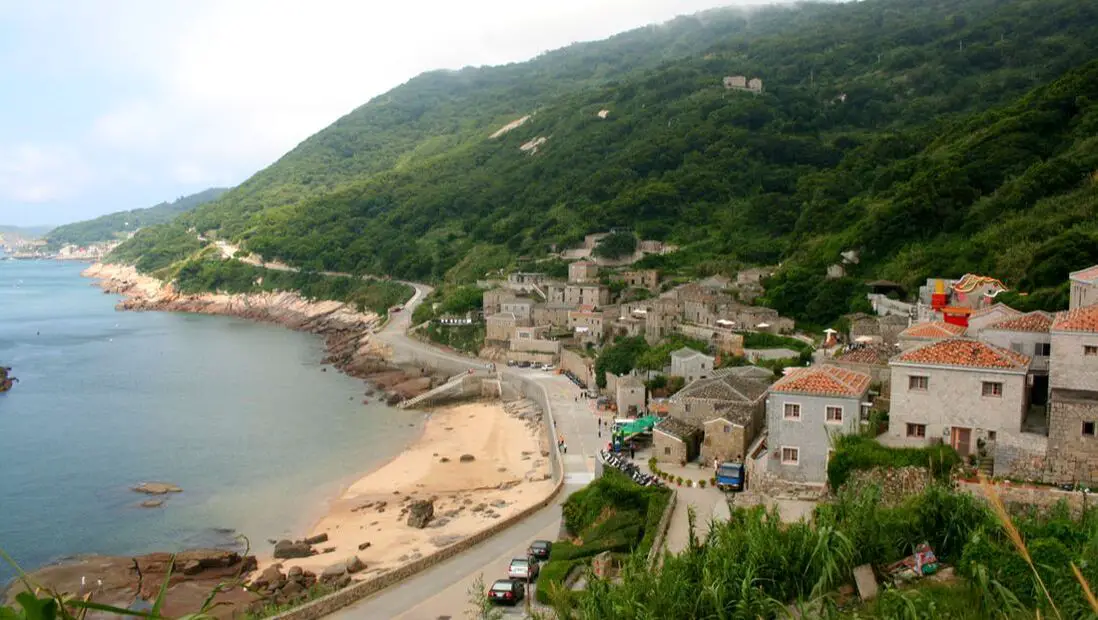
Beigan Island is one of the two largest Islands in Matsu (officially Lienchiang County, Taiwan), and has some of the best preserved traditional stone made fishing villages on the islands. There are also many historical military sites, as the islands were part of the front line during the Chinese Civil War. It is easily accessible via airplane or boat from Taipei.
Background: Thousands of years ago, stone aged peoples once inhabited the Matsu Islands, including Beigan Island itself. These stone aged people later disappeared. The Matsu islands were inhabited again around the Song Dynasty (990 - 1200 AD) by Chinese Fisherman, the descendants of whom still inhabit the islands today. During the Chinese Civil War, Matsu was used as a military outpost for the retreating ROC. During the years that followed, it withheld shelling and threats of invasion from China, helping to keep Taiwan free of communist control. In 1992 after cross straight relations had warmed up, martial law was lifted on the islands and tourists were allowed to visit. In 1994 Beigan Airport was opened, and was the only airport in Matsu for 9 years. In2003, the Nangan Airport was opened, which significantly lowered the number of travelers to Beigan. However fast and convenient boat travel has made it so that most tourists travel to both islands. Beigan Island is the second largest island in Matsu (behind Nangan), and a population of about 2,500. When to go: We recommend going between April and June when the "blue tear" phosphorescent microbes in the water will be the most visible at night. Also, winters can be cold and windy and summers very hot, and there could also be typhoons in the summer and fall. Tours and Activities: Beihai Tunnel Rocking Boat: about 150 NT Blue Tears Museum: about 300 NT SUP/Paddle experience: about 2300 NT You can search for other tours and activities on KKday here or Klook here. Just to let you know, if you book using the links above, we get some commission at no cost to you, and you can help support our blog. You can click here to receive $5 USD on your first Klook purchase. Hotels: We have stayed at and recommend Fu Hwa Homestay on Nangan (you can book on Agoda here, Booking,com here, or Trip.com here), and B&B of Blueshine on Beigan (you can book on Agoda here, Booking,com here, or Trip.com here). Both places were excellent, and provided us a car ride to and from the airport for free. You can also check out our Taiwan hotels guide here. Looking for a hotel? We recommend booking through Agoda here, which provides the best quality selection of accommodation on the island. You can also book Wifi and SIM cards for Taiwan on Gigago here. Need travel insurance? Compare prices on Insubuy here. How to get there: By Boat: There are boats from Nangan Fu'Ao Harbor (南竿福奧港) to Beigan Baisha Harbor (北竿白沙港) every hour from 7 AM to 5 PM. There are no daily routes to Beigan from other islands (except Daqiu). You can book tickets between Nangan and Beigan Islands on KKday here. By Plane: There are flights to and from Taipei Songshan Airport three times a day via Uni Air. You can book flights on KKday here, Trip.com here, CheapO Air here, or Kiwi here. Price: By Boat: 160 NT per person (one way from Nangan), or 500-2000 NT per person (one way from Taipei or Keelung). You can book ferry tickets to Matsu from Taipei or Keelung on KKday here. By Plane: About 2000 NT (one way from Taipei). There are flights to and from Taipei Songshan Airport three times a day via Uni Air. You can book flights on KKday here, Trip.com here, CheapO Air here, or Kiwi here. How to get around on the island: Beigan is a large, hilly island and it would be very hard to get around on foot or bicycle. We recommend one of the following By Ferries: The only way to get to smaller islands without airports is by ferry. You can check KKday here for ferry tickets or buy them at the harbor. By Scooter: We recommend riding a scooter as your #1 choice. It's fast, convenient, and there isn't much traffic on the island. A scooter will cost about 500 NT per day to rent. You can rent a scooter on Klook here or KKday here. When braking on hills, use both brakes, otherwise, you could lose traction on one tire and skid. Don't stop or park on a slope. Also, some hills that are too steep are closed off for scooters. You can also check out our scooter rental guide here. By Car/Taxi: You can rent a car or hire a taxi for 200O NT per day. If you are looking for car rentals, you can also search Qeeq here, Klook here, or KKday here. You can also check out our car rental guide here. By Bus: There are buses that go around the islands, but wait times can be 30 minutes or more. By Bicycle: Cycling is the best way to enjoy Taiwan's landscapes if you have the time and energy. Looking for bicycle rentals in Taiwan? You can search on KKday here and search for tours on Klook here. You can also check out our Taiwan cycling guide here. Map: Please see below:
Qimei is a beautiful island getaway on southernmost end of Penghu County. The main attractions there are the iconic double heart rock (Twin Hearts Stone Weir), as well as little Taiwan rock. Getting there is not easy, but it is definitely worth the visit.
Qimei's History: The name Qimei, meaning "seven beauties", refers to seven women that committed suicide during the Ming dynasty on the island (in the mid 1500s), rather than be defiled by raiding Japanese pirates. The name also has come to mean the seven beautiful things about the island: the scenery, seawater, products, hearts of the people, geology, buildings, and history. Taiwan touch your heart! This island and double heart rock are also central to some of Taiwan's tourist marketing in the recent past. The island is 7km2 and has a population of just under 4,000 people. The main industry is fishing and fish farming, but goat and cattle farming is a growing industry as well. Tours: There are many tours and activities available on the islands such as snorkeling, diving, wind surfing, sailing, canoeing, starlight Marine Ranch, wakeboarding, seafood Barbeque, massage, yachting, glamping, trampoline Water Sports, South Penghu Marine National Park, SUP / Paddle Boarding, kayaking, night fishing, Sheraton Four Points Eatery, Dragon Palace Intertidal Zone, Jibei Sand Tail, and many more options. For more information, look at other tour/ferry sites or book a personalized tour with Klook here or KKday here. Accommodation: We have stayed at and recommend Han's Hostel which had great service and is right next to Shanshui Beach, the best beach in Penghu (you can book on Agoda here, Booking.com here, or Trip.com here), and Cherry Inn Penghu, a newly renovated homestay in downtown Magong with great service and great prices (you can book on Agoda here, Booking.com here, Klook here, Trip.com here, Hotels.com here, or Expedia here). Looking for a hotel? We recommend booking through Agoda here, which provides the best quality selection of accommodation on the islands. You can also find out more about where to stay in our Taiwan hotels guide here. You can also book Wifi and SIM cards for Taiwan on Gigago here. Need travel insurance? Compare prices on Insubuy here. Just to let you know, if you book using the links above, we get some commission at no cost to you, and you can help support our blog. You can click here to receive $5 USD on your first Klook purchase. How To Get there: By Boat: Boats leave daily from Magong (Makung) from 6:30-9:30, stop at Wangan island, and make the round trip back in the afternoon. It takes about 2 hours to get to Qimei from Magong, and then 2 hours back. A boat ticket for one person round trip from Magong is around 800 NT. You can buy ferry tickets at the dock or via travel agency (travel agencies include scooter rental, but times are not as flexible). You can also reach the island by boat via port of Kaohsiung for about 900 NT. You can check KKday here or Klook here for ferry tickets or buy them at the harbor. By Plane: There is an airport on Qimei with service to Kaohsiung and Magong. You can book flights on KKday here, Trip.com here, CheapO Air here, or Kiwi here. By Swimming: Do not try to swim there! Getting Around on Qimei Island: By Scooter: We recommend renting a scooter as the most efficient and convenient type of transport on the islands. However, most places require a local scooter license. You can rent a scooter on Qimei on Klook here or on KKday here. You can also check out our scooter rental guide here. By Bicycle: Cycling is the best way to enjoy Taiwan's landscapes if you have the time and energy. Looking for bicycle rentals in Taiwan? You can search on KKday here and search for tours on Klook here. You can also check out our Taiwan cycling guide here. Take a tour: You can book a tour to Qimei including transportation on Klook here or KKday here. Map: Please see below:
Taitung's Haibin Park (literarily Ocean Coastal Park) stretches along the east coast next to downtown Taitung City and includes the nearest beach, as well as bicycle paths, grassy areas, wetlands, and artwork. It is a great place to relax and enjoy ocean views within walking distance of the city center.
Background: During the Martial law era, this area of shoreline was likely off limits and patrolled by the ROC military watching for a Chinese invasion. Since Martial law has been lifted, the beach area has become a favorite rest area for old Taiwanese men to go fishing in their spare time. Only in the past decade or so has Haibin Park undergone serious development, such as creating bike paths, green areas, and Instagram photo check-in spots. The main feature of the park, Taitung's "Tree of life," which is a small pavilion in the shape of a tree, is considered an international landmark in the park and was created in 2012. The park is now popular with both locals and tourists and you can find a lot of people here on weekends, but fewer people the further south you go. Up north, you can find Taitung's Forest Park which has a lake that allows swimming and kayaking. Hours: 24/7 Price: Free: How to get there: By Car/Scooter: Go south on Provincial Highway 11 until you reach Taitung City. The house is near the southeast corner of Taitung near the ocean on Zhengzheng Road. Looking for scooter rental in Taitung? You can search Klook here or KKday here to search for options. You can also check out our scooter rental guide here. If you are looking for car rentals, you can also search KKday here or Klook here. You can check out our car rental guide here. By bus: From Taitung TRA station, take a bus to central Taitung. The house is about a 20-minute walk from any bus stop. You can book tickets to travel to Taitung via inter-city bus on Klook here. Book tickets via the normal train (TRA) on Klook here. Accommodation: Booking accommodation in the Taitung can be difficult in the summer months and on weekends when rooms can be fully booked for months in advance. We suggest a better quality selection on Agoda.com. We have stayed at and recommend the Papago International Resort in Chishang (you can book on Agoda here, Booking.com here, Hotels.com here, or Expedia here), which is a five star hotel with private villas with pools for each room, and Mountain and Ocean B & B in Taimali (you can book on Agoda here, Booking.com here, Hotels.com here, or Expedia here), which is a quiet and affordable B&B right next to the beach. You can also book Wifi and SIM cards for Taiwan on Gigago here. Need travel insurance? Compare prices on Insubuy here. Tours: There are many tours and activities such as snorkeling, diving, SUPing, Surfing, Speed Boating, Glamping, River tracing and more in Taitung. You can find more tours of Taitung on Klook here or KKday here. Just to let you know, if you book using the links above, we get some commission at no cost to you, and you can help support our blog. You can click here to receive $5 USD on your first Klook purchase. Map: |
Author 作家I am an American expat who has extensive experience living, working, and traveling in Taiwan. In my day, I had to learn many things about Taiwan the hard way. But I have come to learn that Taiwan is one of the best places in the world for Foreigners to live. This blog does not represent the opinions of every foreigner in Taiwan. I am just trying to help others learn more about this beautiful country. Categories
|


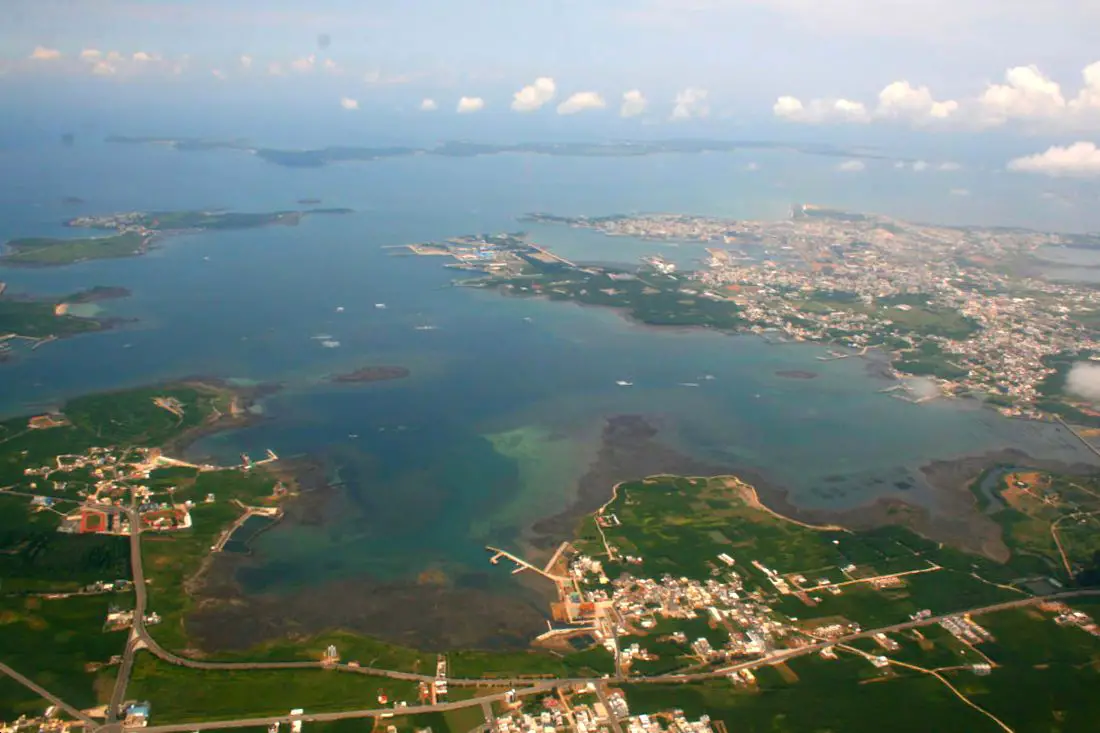
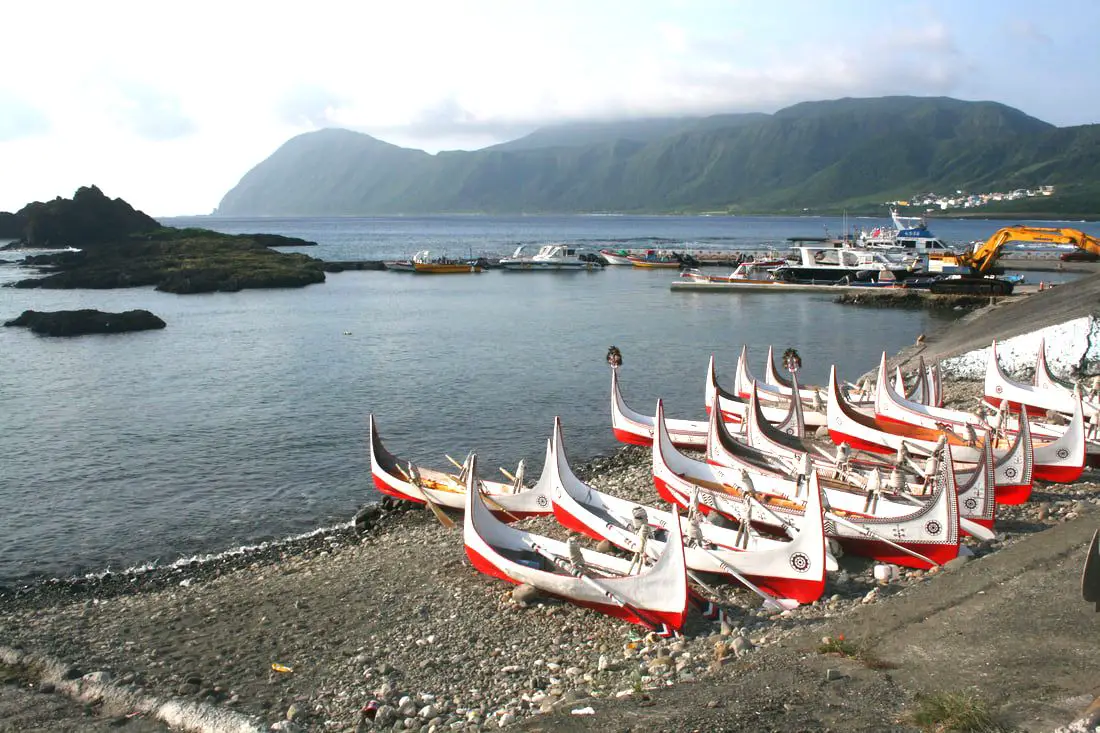
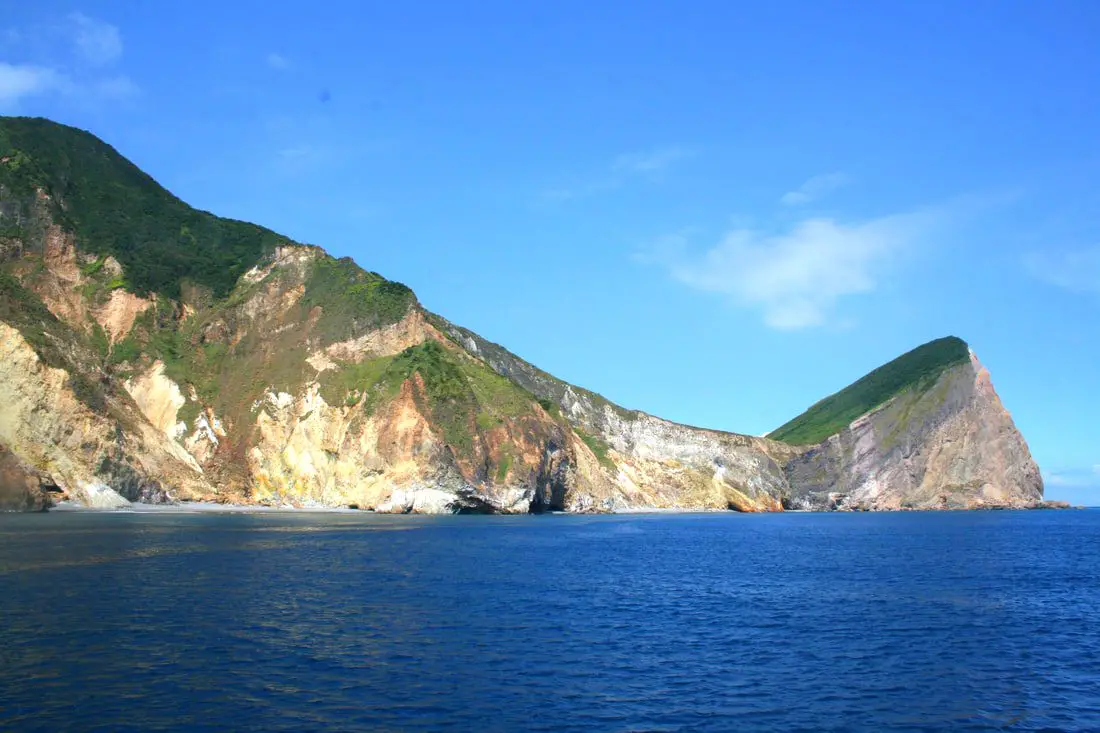
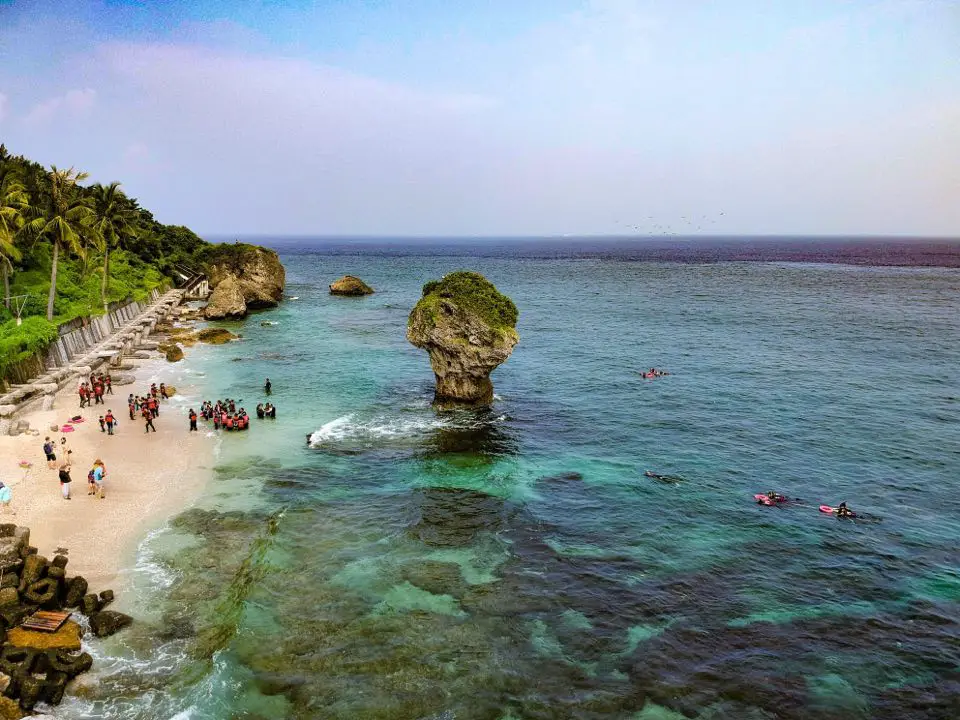
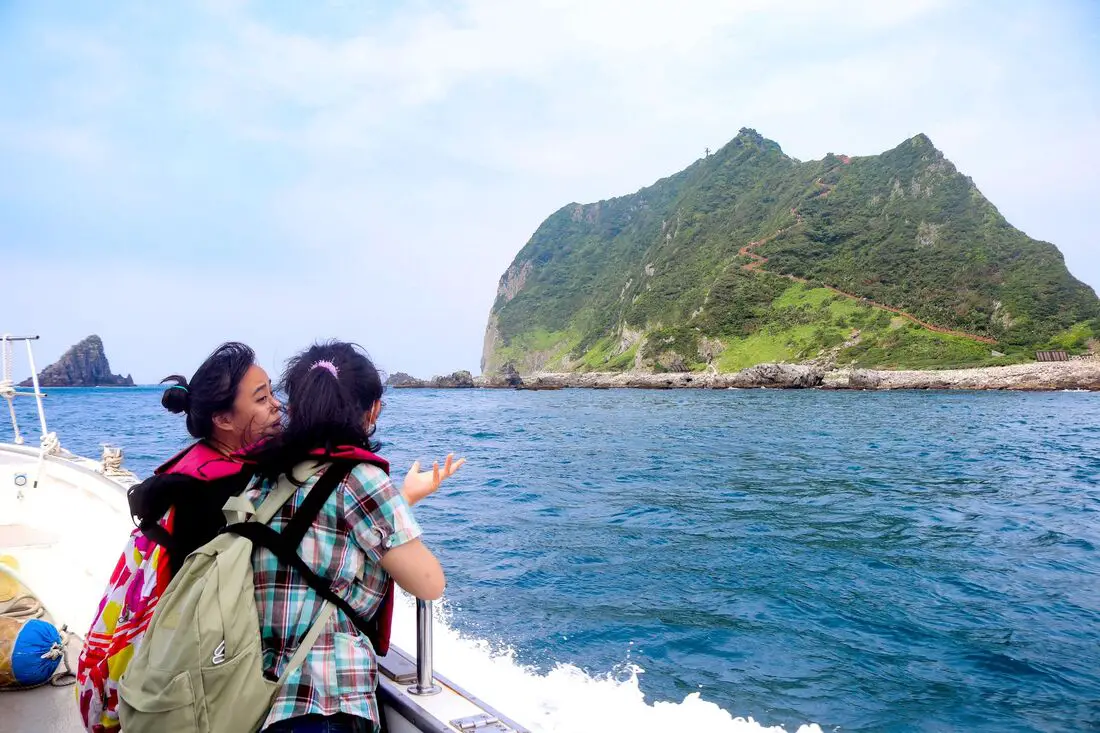
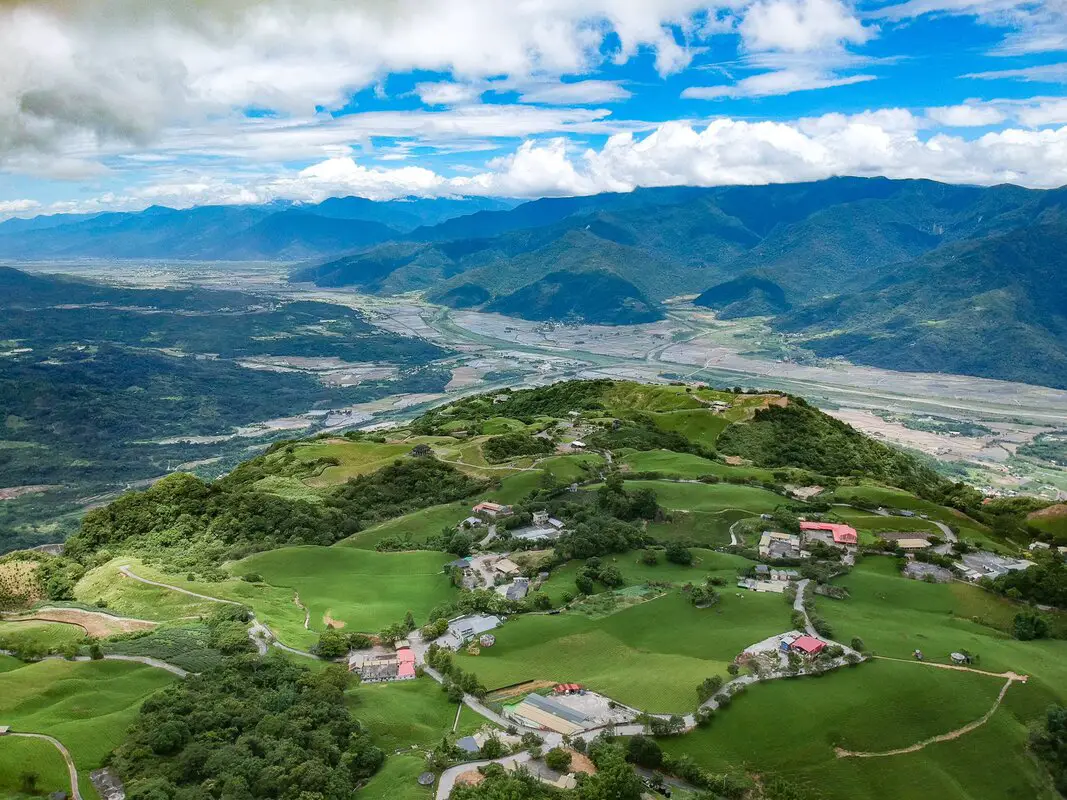
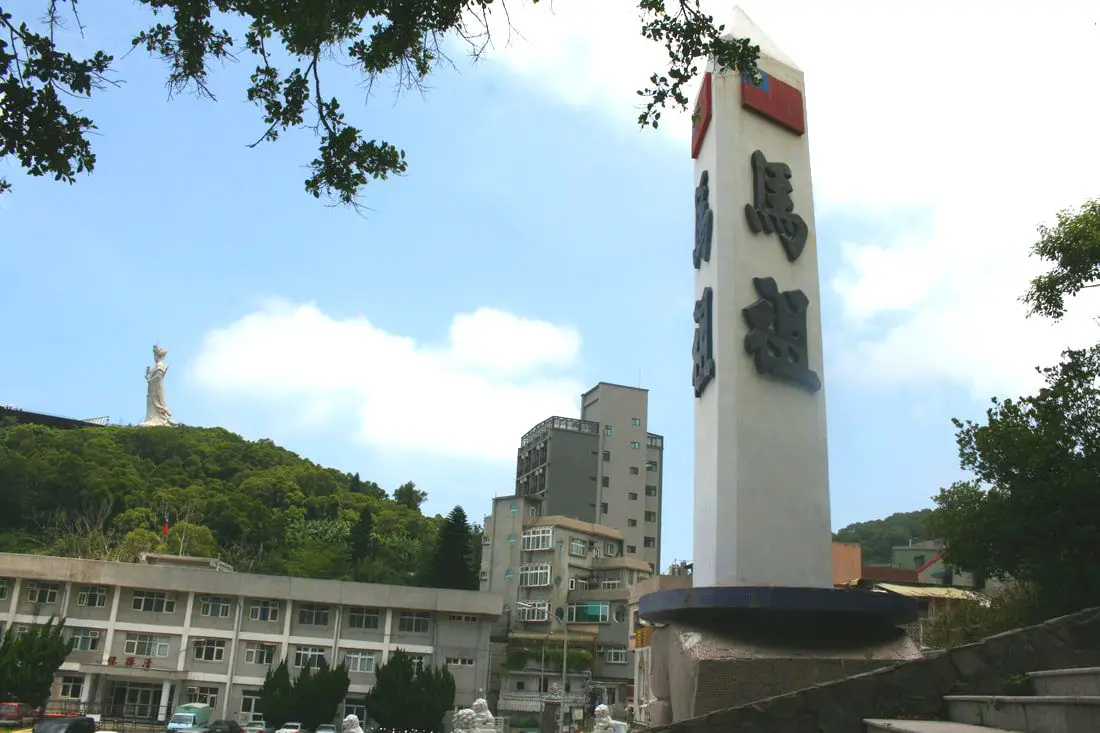
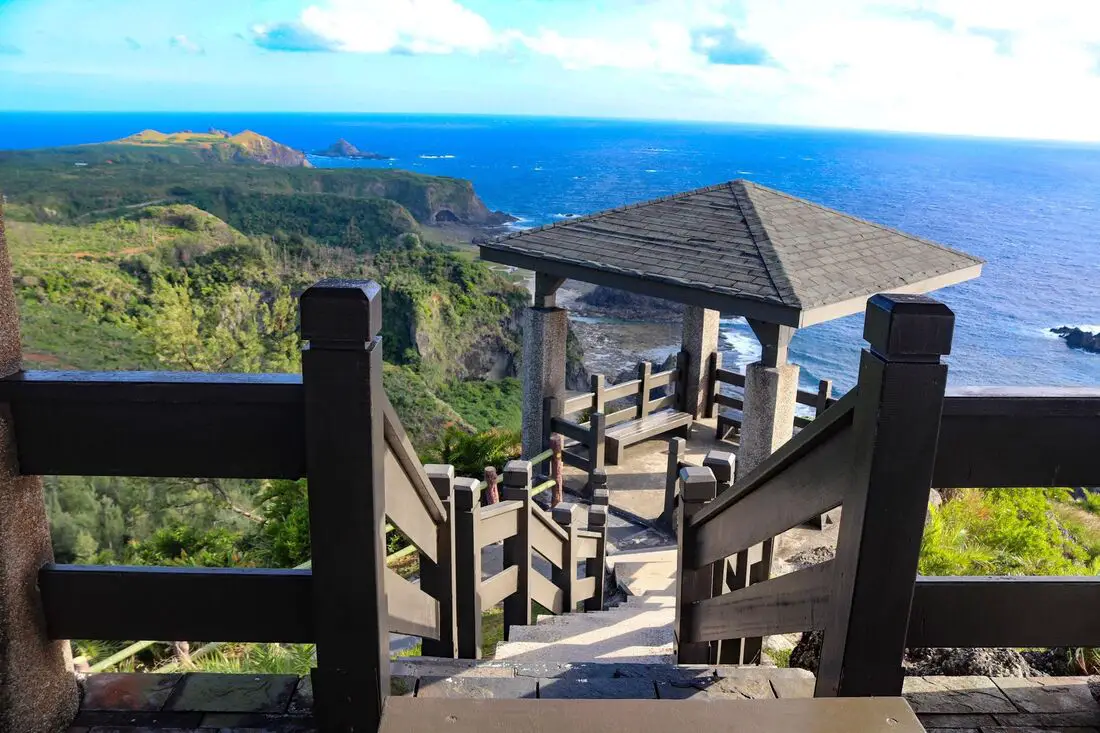

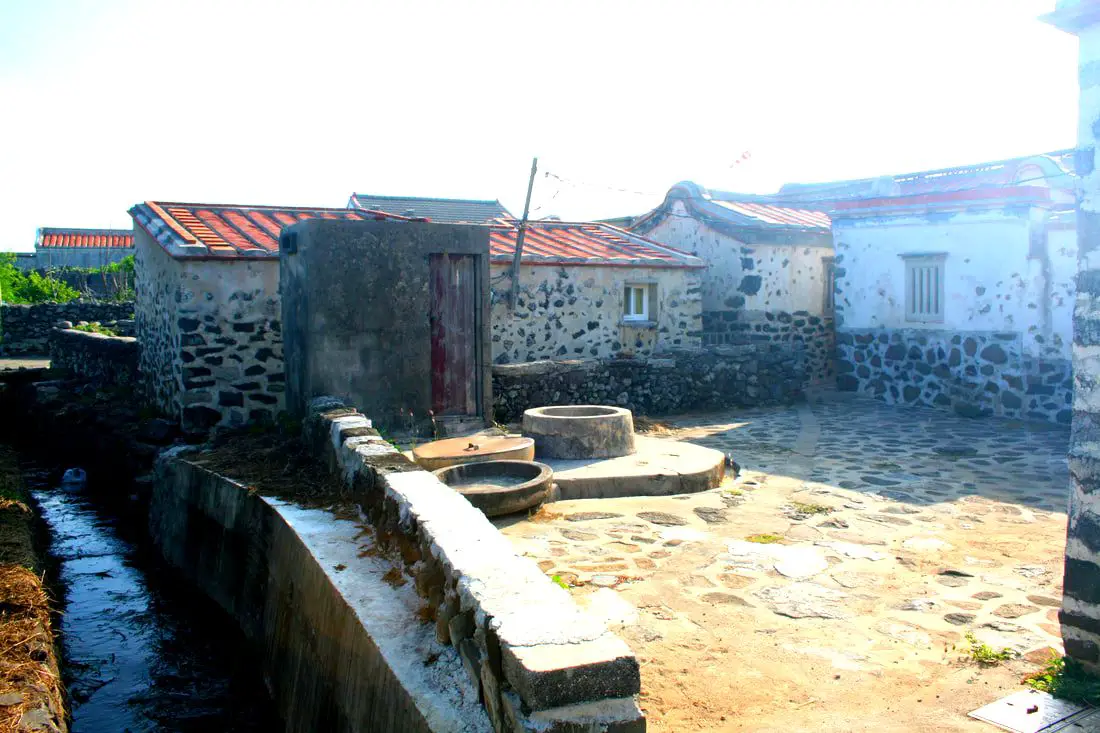
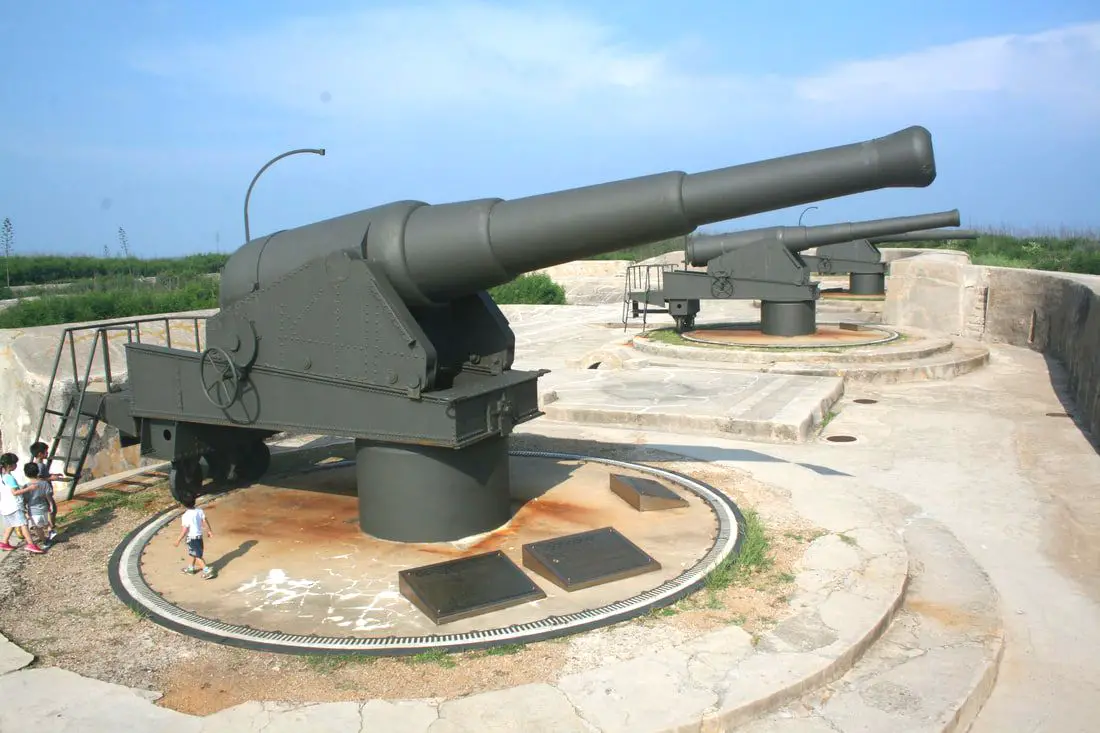
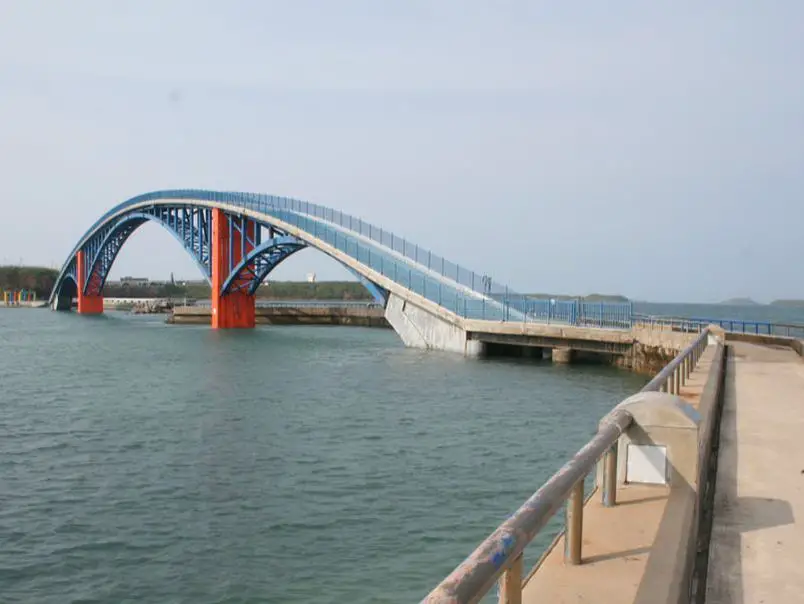
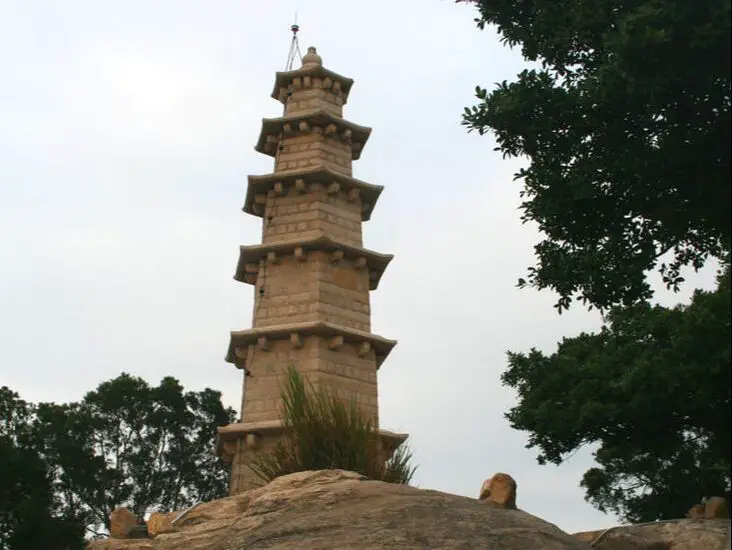
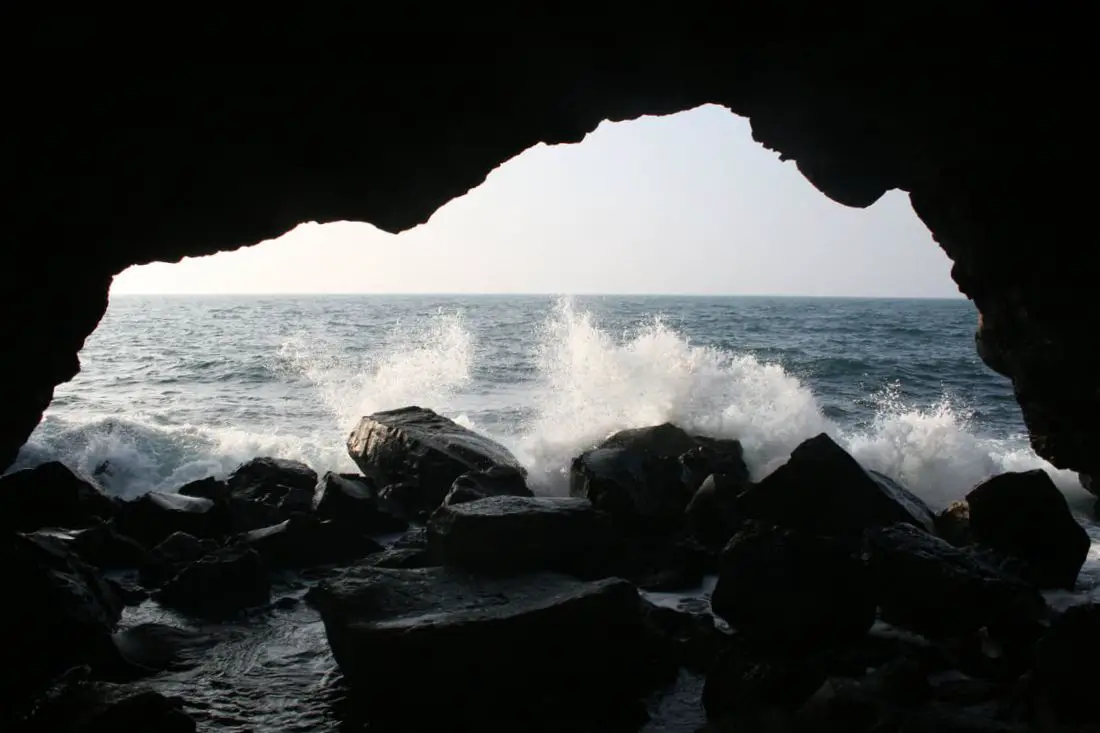
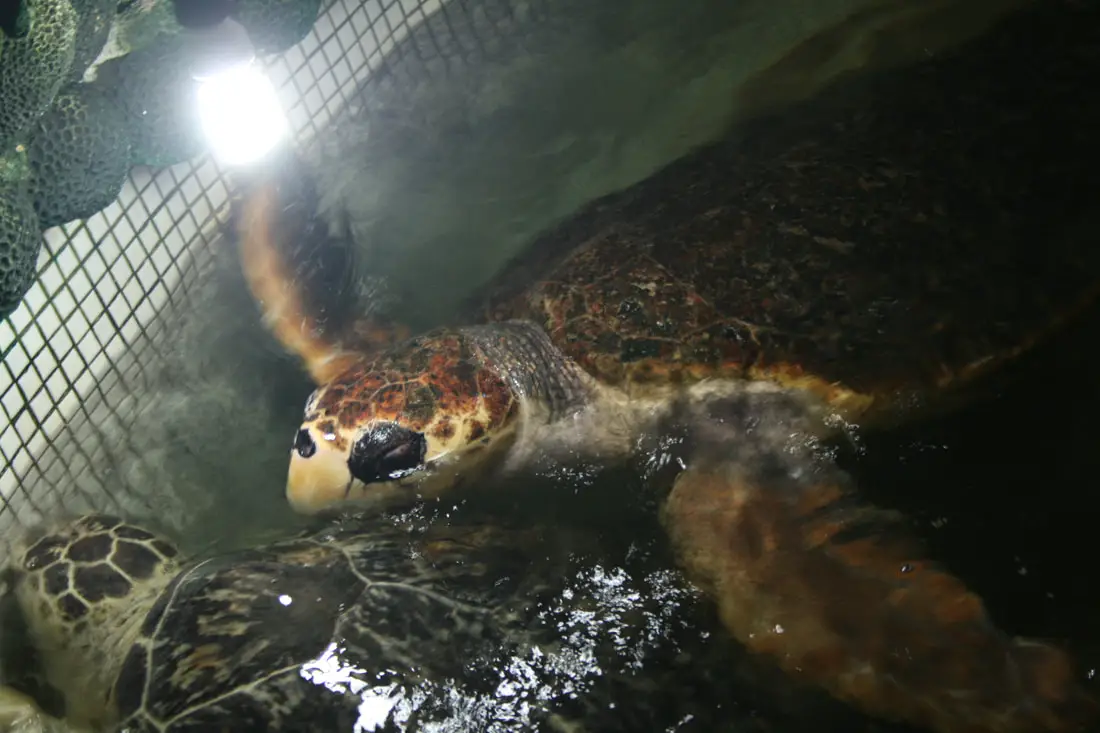
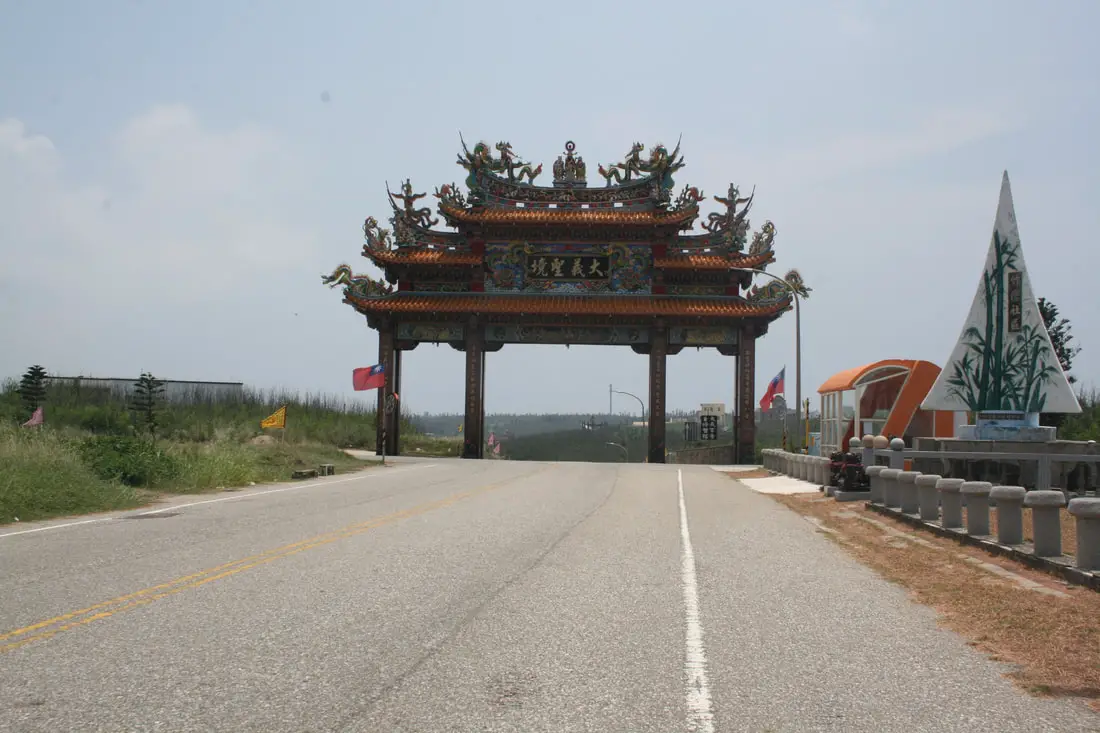
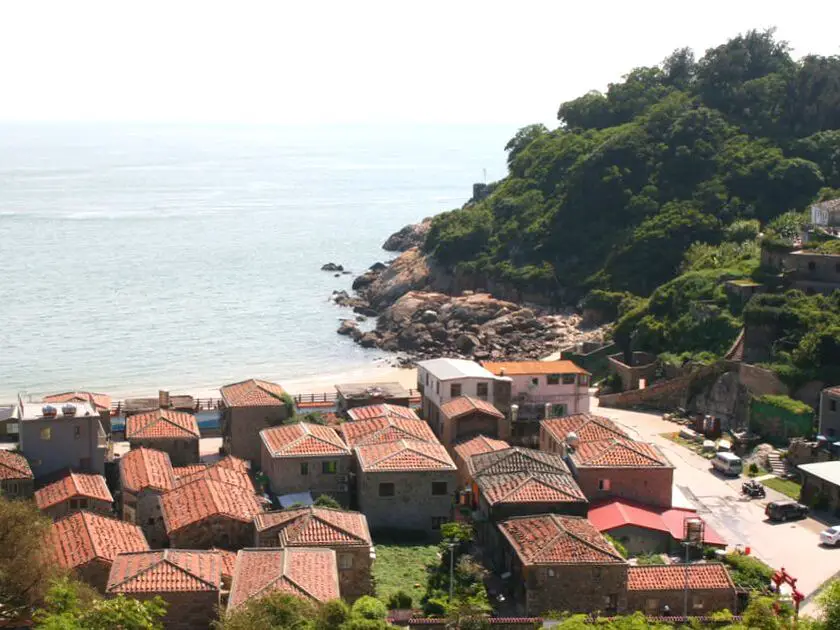
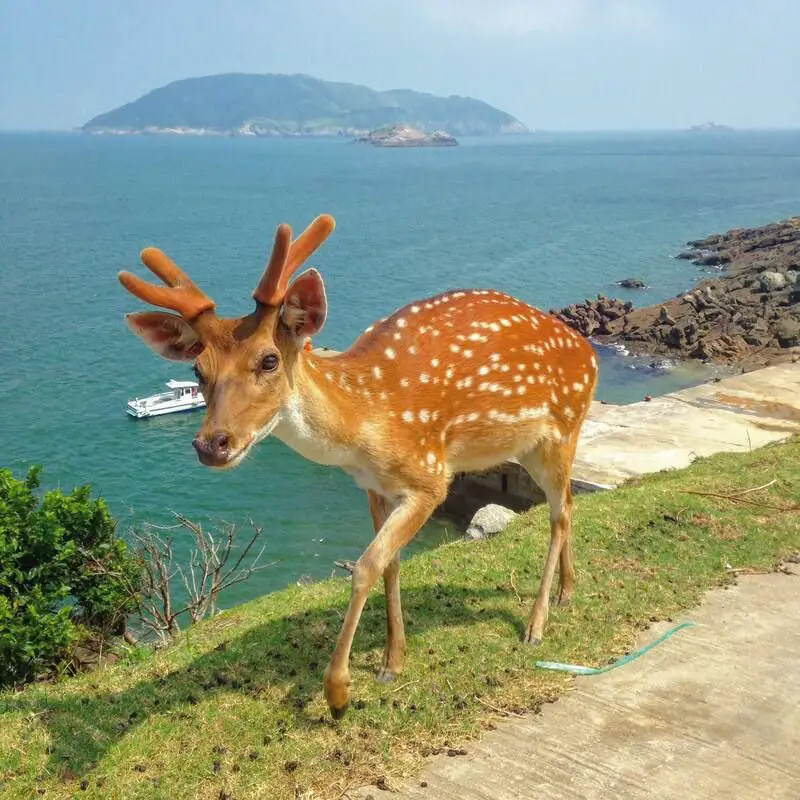
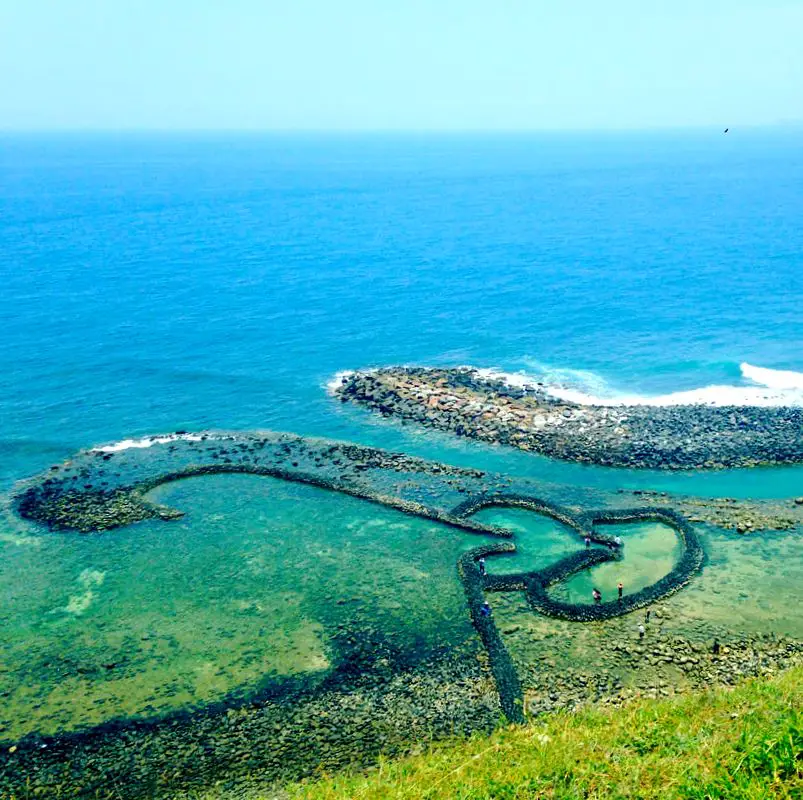
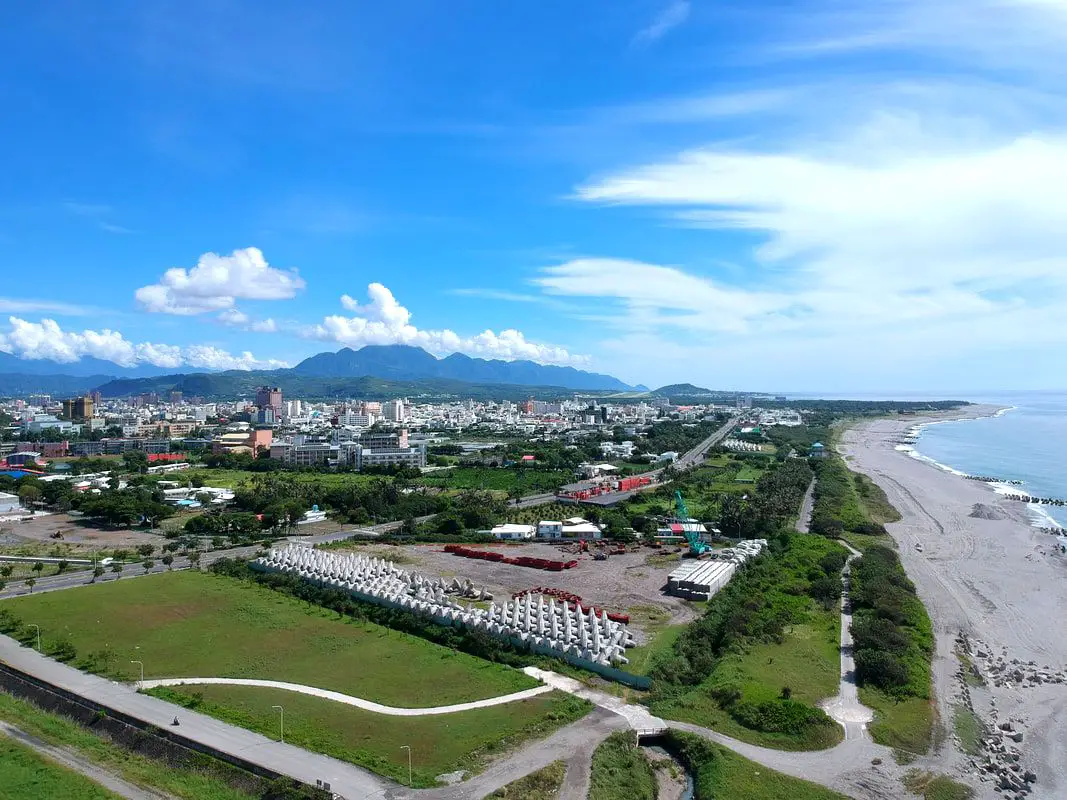
 RSS Feed
RSS Feed
